







Water is life. It’s also a precious resource facing increasing pressure. Traditional water treatment methods often rely on harmful chemicals, leaving a significant environmental footprint.
Introducing HPNow’s GOgen™
GOgen™ harnesses the power of green technology to deliver water treatment, without any chemical inputs or byproducts. By generating hydrogen peroxide on-site, GOgen™ cuts costs, improves safety and removes chemical procurement from your operation.
Effective: Proven in multiple applications: biofilm oxidation, odor control, AOP and more.
Sustainable: No chemical inputs, no byproducts after use.
Safe: No chemical inputs, safe output concentration minimizes occupational hazards.
Cost-effective: Lower operating costs and reduce maintenance needs.

Welcome to the latest issue of H2O Global News dedicated to the urgent topic of river pollution and water quality. Our rivers are crucial for our ecosystems, so let’s work together to protect and sustain them for generations to come.
In this edition, we have an exclusive interview with Cheryl Porter, President of the American Water Works Association and Chief Operating Officer of the Great Lakes Water Authority. She shares her inspiring journey and emphasizes the key role of leadership in driving positive change in water management.
Discover how Wessex Water is revolutionizing water quality monitoring with real-time sensors at popular UK swimming spots, ensuring safer recreational waters. Learn from ABB experts about using drives to enhance river abstraction efficiency, making water extraction more sustainable.
Explore LG Sonic’s advanced technology elevating water quality management in rivers, lakes, and reservoirs. Meet ECOFARIO, a leading organization fighting microplastics to create cleaner rivers for aquatic life.
This issue is filled with insightful articles, expert opinions, and practical tips to help you understand and combat river pollution. Thank you for joining us in this important conversation. Together, we can make a difference.
Warm regards,
Abby Davey Publisher and Co-Founder
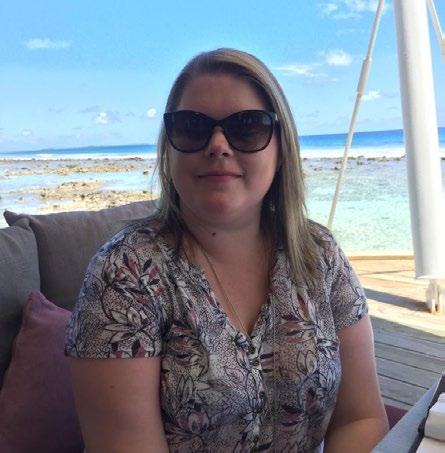
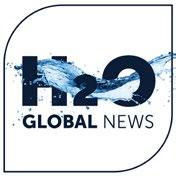
Publisher and Co-Founder
Abby Davey abby@h2oglobalnews.com
Creative Director and Co-Founder
Louise Davey louise@h2oglobalnews.com
Editorial Team
Darby Bonner darby@h2oglobalnews.com
Martyn Shuttleworth martyn@h2oglobalnews.com
Natasha Posnett natasha@h2oglobalnews.com
Advertising +44 (0)7817 105 258 marketing@h2oglobalnews.com

H2O Global News delivers news from around the world covering the Drinking/ Potable Water, Hydropower and Wastewater industries incorporating technology, companies, legislation, the environment and case studies. The H2O Global News Magazine is published four times a year (Spring, Summer, Autumn and Winter) by Blue Manta Media Limited, Buckinghamshire, England, UK.
H2O Global News t/a Blue Manta Media Limited has used utmost care to ensure and maintain the accuracy, completeness and currency of information published on this site. We, however, take no responsibility for any errors or omission, though if notified of any we will endeavour to rectify such.
CGN is an innovative platform that bridges the gap between industry, research and policy in a modern climate conversation. We enable our users to engage in meaningful conversations about the future of our planet and strive to create an open space where collaborators from all sectors can work together for sustainable progress.
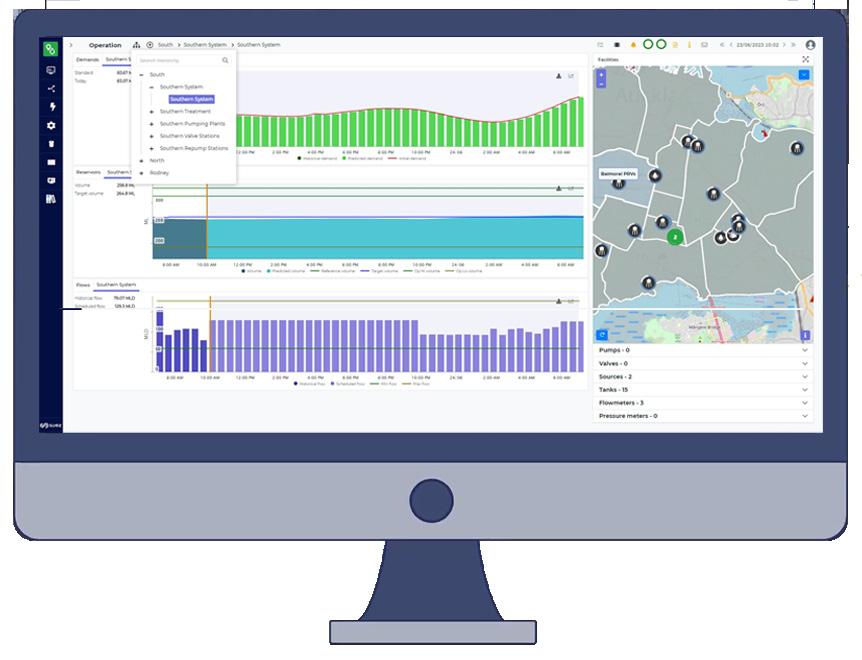


The water industry is a major energy user. In the UK, 3% of all energy used powers water treatment plants, pumping stations, and distribution networks. Despite advances in efficient and greener energy use, utilities remain under pressure to cut energy consumption and costs.
The solution? Real-time optimisation: the future of water sector energy management. It enables utilities to optimise energy use, slash carbon footprint, and cut costs.
AQUADVANCED® Water Supply, the industry leading real-time optimisation software for water distribution, offers 6%-8% reduced energy consumption and emissions, and a 12%-20% energy cost reduction. This advanced digital innovation empowers water utilities to seamlessly manage energy providers and tap into renewable energy sources, contributing to a better, cleaner future.
Discover more and contact us at SUEZ.COM/UK



4-9 Editor Features
10-12 Water, Leadership, and Change:
14-15 How Drives Can Improve River Abstraction Efficiency
16-18 Fighting Microplastics For Cleaner, Toxic Free Rivers
20-22 LG Sonic’s Technology Leads Water Quality Management In Rivers, Lakes, and Reservoirs
23-25 Wessex Water’s Real-Time Water Quality Monitors Launched At UK Swimming Spots
26-27 Working Together To Improve River Water Quality
28-30 Tackling Boat Pollution with E-Propulsion
31-32 Invasive Species: An Overlooked Threat to Inland Waterways
Global Water Experts Insights p.33-39
Global Events p.40
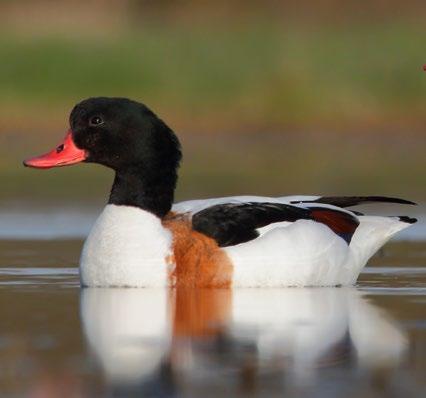
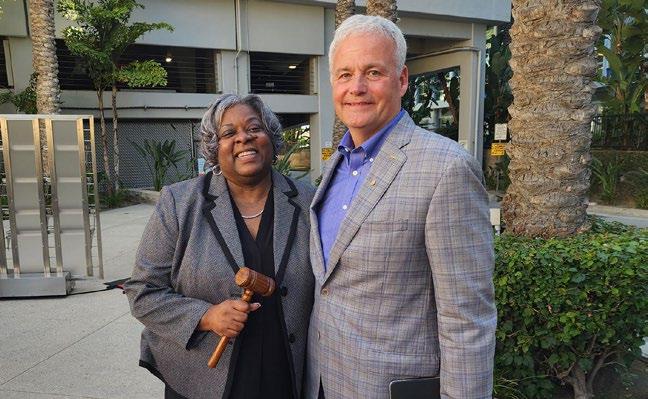



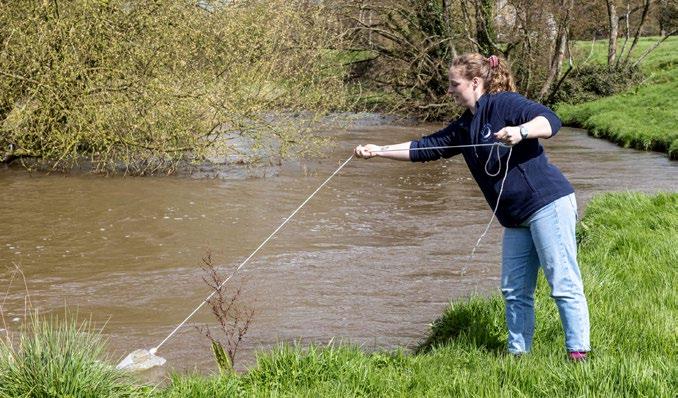

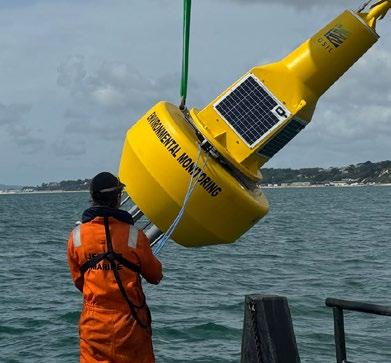


Written By | DARBY BONNER
Picture a river. What do you see? Sparkling water, perhaps a leaping fish, or a heron stalking its prey along the banks? Now, look closer. Beneath that shimmering surface lies a world teeming with life – from microscopic algae to darting minnows, to the lumbering crayfish patrolling the riverbed. This underwater realm, often out of sight and out of mind, forms the backbone of our freshwater ecosystems. But all is not well in Britain’s rivers.
The United Kingdom prides itself on its picturesque waterways, from the chalk streams of southern England to the rushing torrents of the Scottish Highlands. Yet, a shocking statistic lurks beneath this idyllic image: only 14% of rivers in England are considered to be in “good” ecological condition. It’s a serious reminder that our rivers face a crisis, one that threatens not just aquatic life, but the entire ecosystem that depends on these watery arteries.
So, what’s muddying the waters? The culprits are many, and they come from all corners of our modern life. Picture a rainy day in a typical British town. As rainwater washes over roads and pavements, it sweeps up a cocktail of pollutants – oil from cars, litter, and even the rubber worn off tyres. This urban runoff eventually finds its way into our rivers, bringing its toxic cargo along for the ride. But city life isn’t the only source of trouble. In the countryside, farms play their part too. When heavy rains lash freshly fertilised fields, the excess nutrients are carried into nearby streams and rivers. It’s like forcefeeding our waterways a diet they can’t handle, leading to algal blooms that choke the life out of the water.
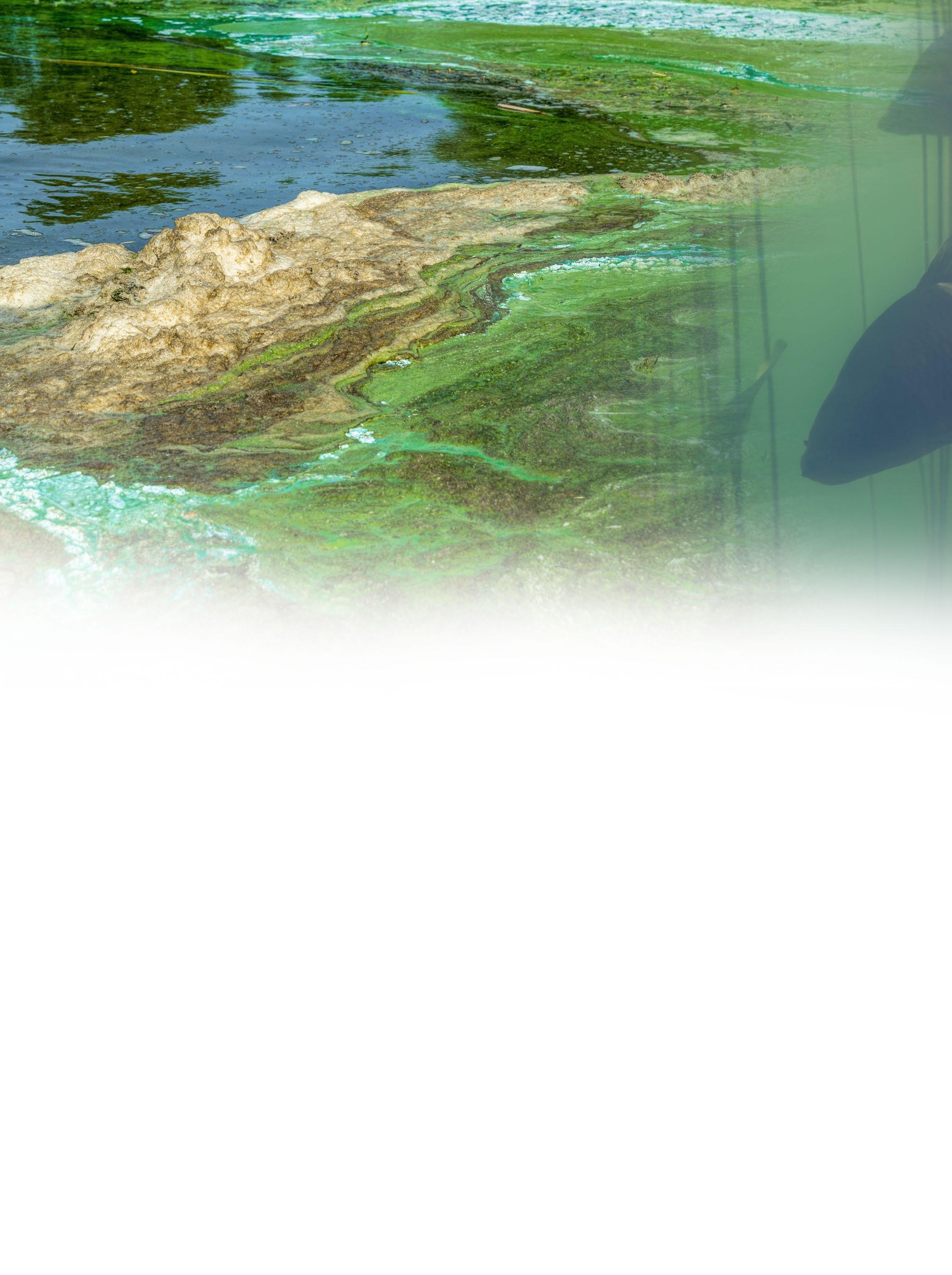
And then there’s the elephant in the room – or rather, in our plumbing. During heavy rainfalls, our ageing sewage systems often can’t cope. The result? Raw sewage overflowing directly into rivers. It’s a Victorian problem persisting well into the 21st century.
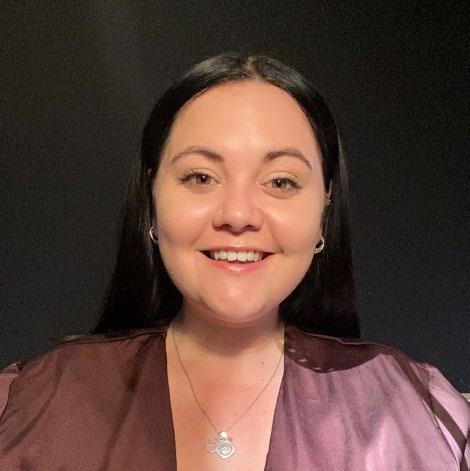
For the creatures calling our rivers home, this pollution is nothing short of catastrophic. Take the Atlantic salmon, once a common sight in British rivers. These remarkable fish, capable of epic journeys from river to sea and back again, are now struggling to survive in many of their former territories. Pollution, along with habitat loss and climate change, has pushed them to the brink landing them on the IUCN Red List as vulnerable to becoming extinct in European waters.
But it’s not just the fish feeling the pinch. Playful river residents like otters, depend on clean water and abundant fish stocks to thrive. While they’ve made a comeback in recent decades, pollution still threatens their recovery. And let’s not forget the unsung heroes of our rivers – the insects and other invertebrates that form the base of the food chain. When these tiny creatures suffer, the effects ripple up through the entire ecosystem.
While we focus on the UK, it’s worth noting that river pollution is a global challenge. From the plastic-choked Ganges in India carrying nearly 115,000-600,000 tons of plastics per year, to the industrial-waste-laden Yangtze in China where almost 75% of factories discharge their wastewater directly to the river, rivers worldwide are
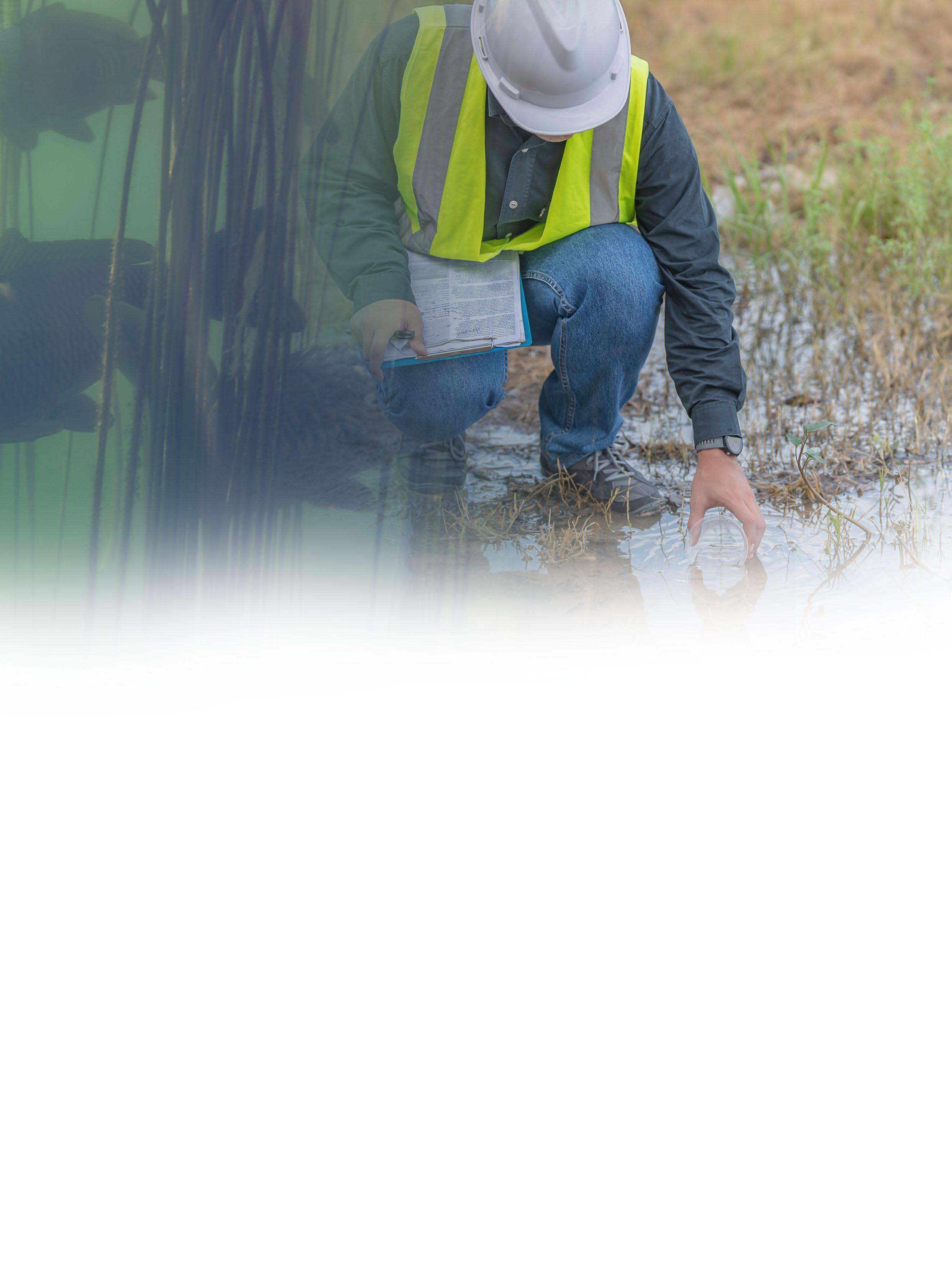
under siege. It’s a reminder that what happens in our local streams is part of a much larger story.
The good news? We’re not powerless in the face of this watery crisis. Across the UK, people are rolling up their sleeves and getting to work. Community groups organise river clean-ups, removing tonnes of rubbish from our waterways. Some examples include:
• Thames21’s Leading a Waterway Clean Up course
• The Marine Conservation Society’s annual Great British Beach Clean
• Angling Trust’s Just Take 5 Campaign
• Keep Britain Tidy’s Riverine campaign, the Canal
• River Trust’s What Lurks Beneath
Farmers are adopting new techniques to reduce runoff, creating buffer zones along riverbanks to filter out pollutants before they reach the water. Many organisations are happily working with farmers to improve their practices. For example, The Rivers Trust engages with over 12,000 farmers to provide effective, consistent advice to farmers about reducing agricultural pollution while also advocating so that farmers can receive adequate funding and support for environmental improvements.
The water industry, too, is starting to step up. Major projects like London’s “super sewer,” the Thames Tideway Tunnel, aim to drastically reduce sewage overflow events. Meanwhile, water companies are investing in advanced treatment technologies to tackle emerging pollutants like microplastics and improve water quality.
But what about us, the everyday river lovers? It turns out, we have more power than we might think. Simple actions can make a big difference:
• Be mindful of what goes down our drains. Those “flushable” wipes? They might not be as flushable as advertised!
• Choose eco-friendly cleaning and personal care products to reduce harmful chemicals entering our waterways.
• Get involved in local river conservation groups.
• Reduce plastic use – much of it eventually ends up in our rivers and oceans.
The story of our rivers is still being written, and we all have a part to play in its next chapter. Will we continue to treat them as convenient disposal systems, or will we recognise them for what they truly are – vibrant, vital ecosystems that sustain not just wildlife, but our own residents?
As we stand at this crossroad, one thing is clear: the health of our rivers reflects the health of our communities. By working to restore and protect these precious waterways, we’re not just saving fish and otters – we’re safeguarding our own future, ensuring that generations to come will still know the joy of a river teeming with life, both above and below the surface.

Written By | MARTYN SHUTTLEWORTH
Rivers and lakes have always been part of my life, and I spent many years spent living and working near water, learning to understand its language and following the changes as one season flowed into the next. Becoming lost in my own thoughts while wandering down the tranquil banks of the River Lune, surveying elegant shelduck on the River Forth, or cutting reeds at Leighton Moss among the darting wagtails left lasting memories.
The attraction to rivers and lakes, such an essential part of life, is buried deep within human nature and contributes to our wellbeing. It is no surprise that people travel long distances to spend time on the water, taking joy in their surroundings and escaping the relentless pressures of modern life. Whether angling, swimming, canoeing, or simply walking the banks, rivers provide mental, physical, and spiritual sustenance.
Visit the River Thames, Loch Lomond, or Lake Vyrnwy, and you will see the delight people take from lakes and rivers. Waterways are ingrained deep in the British national psyche, but they face intense pressure from industrial pollution, water extraction, and agricultural runoff, as well as the ubiquitous sewage that dominates
entire news cycles. The human desire to be in and around water is difficult when rivers contain dangerous levels of bacteria and algae that threaten the health of humans and animals. Over 83% of English rivers contain evidence of pollution from sewage and agriculture, making this a problem that needs to prominent in the public consciousness.

Another problem is conflicts of interest where groups can become mutually antagonistic because the enjoyment of one interferes with the enjoyment of another, creating mistrust. Birdwatchers, ramblers, and anglers want to enjoy the peace without the distraction of swimmers and canoeists who simply want to spend time on the water. Balancing the needs of these various groups is never easy and the arguments and infighting can be prolonged and bitter. Clearly, rivers are cherished, and everyone should have the right to enjoy them, so how can we balance the different needs of people who love spending time around water?
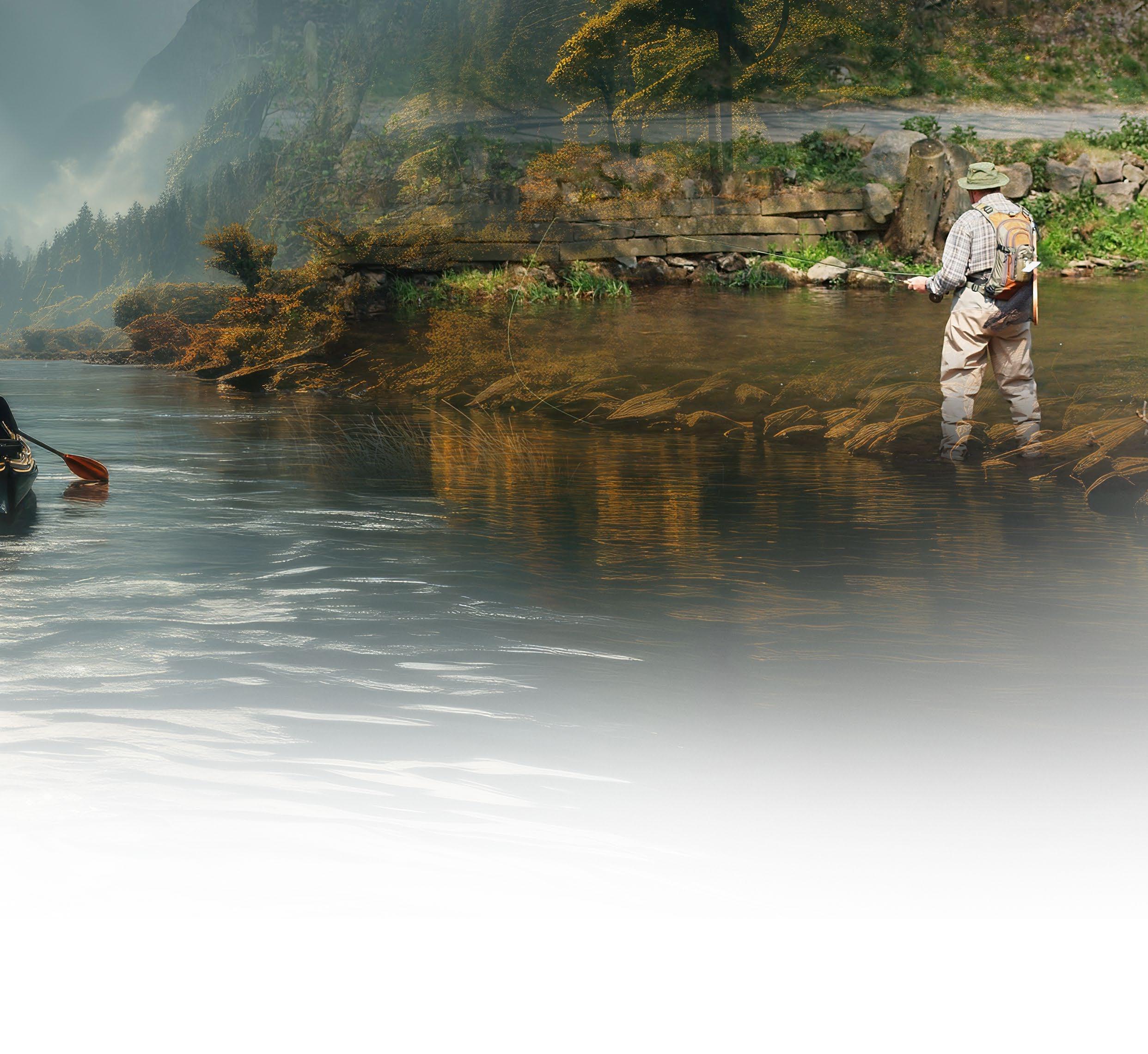
As a sign of welcome change, the recent negativity over pollution is actually uniting different groups, encouraging them to work together and tackle the problems. Everyone wants clean, ecologically healthy lakes and rivers, and organisations covering a broad range of interests are delivering results. Armed with data and determination, they are swaying public opinion and showing that unity can be a powerful force.
Now, groups who were previously antagonistic find that stopping pollution is something they can agree upon. Working together creates effective pressure groups, building a spirit of compromise and understanding. Importantly, these groups are taking advantage of modern apps and sampling techniques to unleash citizen science and provide valuable data. With this evidence, they are shaming decision-makers and polluters into meaningful action.
On the beautiful Wolvercote Mill Stream in Oxford, a pressure group lobbied DEFRA to designate the stream as a bathing area, making it only the second stretch of river in the UK to achieve this classification. By testing the water, especially after rain, they recorded unacceptably high levels of bacteria emanating from a nearby sewage plant. Now, the water is tested more frequently, and the group provides constant data to keep the pressure on authorities and water companies, ensuring the river is cleaner and safer.
In a similar program, the Clean Water Sports Alliance, which covers a number of sports from rowers, sailors, and kayakers to ramblers, anglers, and swimmers, is
confronting dangerous river pollution. With almost half a million members, this group is a powerful voice for cleaner, safer rivers. The CSWA actively engages in citizen science, with groups such as the Angling Trust organizing studies and supporting ongoing monitoring by members to take samples from rivers across England.
Many other groups are engaging in citizen science and targeted sampling to hold water companies and government organisations to account. The Rivers Trust’s annual Big River Watch encourages volunteers to monitor rivers with an app and provide data. With momentum growing and the public firmly on the side of cleaning up inland waterways, many other groups are emerging to help inspect and protect the waterways we enjoy, using the power of publicity to demand action.
Because apps and new water sampling techniques are relatively cheap and easy to use, the public can now monitor pollution directly. We can take care of our beloved rivers and lakes, ensuring that future generations will also be able to experience their natural beauty and powers of relaxation.
Working together and putting pressure on water companies and government can force them to act, with the hard work of volunteers and citizen scientists leaving no hiding place. Collaboration and unity also mean that different groups of river enthusiasts are developing understanding and learning to live with each other. With this sense of togetherness, they are very much leading the fightback.

Written By | NATASHA POSNETT
The UK is home to some of the most breathtaking National Parks. They are a sanctuary for wildlife and diverse ecosystems to flourish, and they offer us a respite from the urban jungle and our busy lives. These National Parks, with their stunning landscapes and serene rivers, are meant to be protected areas, but unfortunately, many of their rivers are now under threat from pollution. Habitats are being degraded and biodiversity lost. Pollution also disrupts vital ecosystem services, such as water purification, nutrient cycling, and recreational activities.
Are rivers in the UK being turned from the lifesustaining arteries of our landscapes into murky channels of harmful toxins? The statistics definitely make it seem that way!
No single stretch of river in England is in good overall health. Only 15% of English rivers reach good ecological health standards, and toxic chemicals that remain in ecosystems for decades pollute every stretch of English rivers.
Surfers Against Sewage reported 584,001 discharges of raw sewage into UK waterways in 2023 alone and stated that 75% of UK rivers pose a serious threat to human health. Of the 86% of inland water bodies that fail to meet targets in England, 36% have been identified as failing directly as a result of sewage and wastewater discharges.
If this is the general state of our rivers it comes as no surprise that national parks are also seeing the effects. National parks are only created and protected by imaginary boarders- there is nothing stopping pollution from winding its way into the “protected” area.
Dartmoor, a national park in Devon, England, is known for its toors and expansive moors, rich biodiversity, and numerous rivers running through its undulating terrain. Its rivers include the Dart, Tavy and Teign, and all are important to the park’s ecosystem and to the local communities.

Why are Dartmoor rivers struggling with poor water quality?
• Nutrient Loading: One of the significant contributors to river pollution in Dartmoor is agricultural runoff, particularly from farms that use traditional, chemical heavy fertilisers and pesticides. Excessive nutrients like nitrogen and phosphorus enter the rivers, leading to eutrophication—a process that depletes oxygen levels in the water and results in harmful algal blooms. These blooms can be toxic and create “dead zones” where aquatic life cannot survive.
• Sedimentation: Livestock grazing near riverbanks contributes to soil erosion, which increases sedimentation in rivers. Sediment can smother fish eggs, reduce water quality and disrupt important habitats and spawning grounds.
• Sewage Effluent: Some rivers in Dartmoor receive untreated sewage from nearby towns and villages. This introduces harmful chemicals, bacteria and viruses into the rivers, risking wildlife and human health.
• Microplastics: Wastewater discharge can also carry microplastics into rivers, where they accumulate and

cause long-term ecological damage. These tiny plastic particles are ingested by aquatic organisms, leading to bioaccumulation in the food chain.
• Mining Legacy: Dartmoor has a history of mining, particularly for tin and copper. Although most mines are now closed, their legacy persists in the form of heavy metal contamination. Acid mine drainage from abandoned mines releases toxic metals such as lead, arsenic and cadmium into rivers, severely impacting water quality and all aquatic life.
Lake Windermere is one of the most iconic landmarks in the Lake District and the largest lake in England. It is 10.5 miles long, a prevalent location for tourists to visit, and an essential freshwater resource for local communities.
Why is Lake Windermere struggling with increasing levels of pollution, poor water quality and failing to meet good ecological status?
• Nutrient Pollution: Agricultural activities in the catchment area contribute to nutrient runoff, particularly nitrogen and phosphorus from fertilisers. These nutrients enter the lake via streams and rivers, leading to eutrophication—a process that results in excessive algal growth. This algal bloom depletes oxygen levels in the water, harming aquatic life and leading to poor water quality.
• Livestock Waste: Animal waste from farms also contributes to nutrient loading in the lake. When livestock graze near water bodies, their waste can wash into the lake during rainfall, introducing bacteria, pathogens and nutrients that further degrade water quality.
• Sewage Discharge: During heavy rainfall, the sewage
system in the area can become overwhelmed, leading to the discharge of untreated or partially treated sewage into the lake through combined sewer overflows. This introduces harmful bacteria, pathogens, and organic pollutants into the lake, posing risks to aquatic life and human health.
• Septic Tanks: Many properties around Lake Windermere rely on septic tanks for sewage treatment. Improperly maintained septic tanks can leak, allowing untreated sewage to enter the lake.
• Litter and Waste: The high volume of tourists visiting Lake Windermere contributes to pollution levels through carelessness and littering. Plastic waste, food packaging and other items enter the water, harming wildlife and degrading the lake’s aesthetics.
• Boating: Recreational boating can also contribute to pollution, with fuel spills, oil leaks and the discharge of waste from boats directly into the water. All of these are toxic to aquatic species and humans alike.
Dartmoor and lake Windemere are just two examples out of the whole country, but it gives you the true idea of how badly our rivers in our national parks are being impacted by pollution and struggling to maintain healthy levels of water quality. It is sad to hear these stories of pollution, and we can only hope that our combined efforts will cause a shift towards revitalising our national parks and preserving the places we love to visit. Improving agricultural practices is vital, and we need stronger regulations and regular monitoring to identify pollution sources and enable timely interventions. The good news is that we have the answers, the science is there, and we know what we need to do in order to protect these vital habitats, so it really is a matter of educating, implementing and enforcing.
Written By | DARBY BONNER

In the dynamic world of water services, Cheryl Porter stands out as a leader whose commitment to safeguarding our most vital resource is both inspiring and unwavering. As the cover feature of our digital magazine, Cheryl’s story is not just one of professional success but also personal triumph.
As the Chief Operating Officer of the Great Lakes Water Authority (GLWA), Cheryl oversees the operations of five water treatment plants and their associated water transmission infrastructure. These facilities are responsible for providing treated drinking water to 88 member partners across 115 communities in southeast Michigan, impacting the lives of millions. Her leadership ensures that these systems operate efficiently and safely,
safeguarding the water supply for countless families.

What are the main sources of river pollution and poor water quality affecting communities today, especially in urban areas like Detroit?
“As President of the American Water Works Association (AWWA), my goal is to tackle some of the most pressing water issues and help ensure our communities are better protected in the face of climate change. With rising temperatures, we are increasingly grappling with harmful algal blooms in our freshwater bodies. We continuously test for PFAS in our water and are actively working to eliminate lead from our distribution systems. These are serious, everyday risks that require vigilant and ongoing attention to ensure the water reaching homes is safe for drinking.”
How do you plan to tackle river pollution and improve water quality in affected areas?
“Water is a shared resource that requires collective protection and maintenance. At GLWA, we continually evaluate our infrastructure and the science and technology used to treat water to identify areas for improvement. The AWWA’s Water 2050 initiative is a global effort focused on safe water, healthy people, and a sustainable planet. Through a yearlong discovery process and intentional discourse, we have set attainable goals to address the challenges facing the world’s drinking water. This commitment drives everything we do as an association.
As private citizens, we must be mindful of how we dispose of harmful materials and medications and reconsider the use of lawn and gardening chemicals.”
How can AWWA influence policies to better address river pollution at both local and national levels?
“AWWA is comprised of over 4,000 utilities that supply roughly 80 percent of the United States’ drinking water population. We have global partnerships with countries such as Canada and India, and our 51,000 members represent the full spectrum of the water community—from public water and wastewater systems to environmental advocates, scientists, and academicians.”
“We are all united under the mission of achieving a better world through better water. This collective pursuit enables us to champion AWWA efforts at the local, state, and federal levels, bringing our diverse expertise to the table to influence initiatives aimed at preserving freshwater sources, including rivers.”
What key legislative or regulatory changes are needed to combat river pollution effectively?
“We must prioritize protective and preventative measures. Once water is contaminated, the job becomes much more difficult. Implementing sciencebased policies and measures that encourage private citizens, corporations, and public entities to safeguard source water is crucial.”
“No one entity can do it alone; we must work together towards a common goal to protect this shared resource.”
What initiatives are currently in place to support communities in addressing the consequences of polluted rivers?
“Removal of contaminants must be the number one focus. We need to replace lead service lines and implement corrosion control protective measures to safeguard drinking water. Communities of color and low-income neighborhoods are disproportionately affected by polluted water, leading to justified mistrust. We must strengthen relationships with marginalized communities by increasing transparency and communication as we rebuild trust in their drinking water systems.”
What does being the first woman of color and African American President of the AWWA mean to you?
“As a product of Detroit Public Schools and the first Black person to serve in this role, the historical significance of this position is not lost on me. I know that just being there and being present makes a difference. It’s meaningful for other Black women who aspire to meet that challenge to see someone in that role who looks like them.”
How do you feel that your early experiences in Detroit shaped your career path and approach to leadership?
“I would not be where I am in my career today without the support of female mentors who helped me along the way. My high school chemistry teacher, a woman, ensured that I did not shy away from science fairs or challenging presentations. She was the first of
Continued on page 12
many female mentors who lifted me to where I am today.
I carry the lessons I learned from my mentors with me and pay them forward. Everyone has a role and a reason for being here, regardless of what they look like. The one thing we all have in common is our passion for water.
I remember a pivotal moment in my career when I was writing down numbers for the senior chemist making treatment decisions, and I realized, ‘That’s water going to my house.’ The water I’m protecting is going to my family and friends. Once I made that connection, I think that’s where my career truly began.”
How do you plan to use your position to pave the way for other women and people of colour in STEM fields?
“Throughout my career, women were pivotal to my development and encouraged me to pursue my interest in science. They inspired me to make a difference, to contribute, and to give back where I could. It was with their support that I thrived in environments where I was often the only woman, and the only woman of color, in the room. Today, I make sure to continue that legacy for the next generation.”
Can you share some examples of mentorship or programs you are involved in to support the next generation of STEM leaders?
“I am a strong advocate for increasing diversity and representation in STEM fields. I make it a point to be present during career days and to support young women pursuing their interests in science and technology. I am actively involved in AWWA Young Professionals, AWWA Transformative Leaders, and GLWA Young Professionals TM.”
What advice would you give young women and people of colour aspiring to enter STEM careers?
“You have a voice and skills that will make a difference in your community and in any room you walk into. Find what you are passionate about and pursue it relentlessly. When you love what you do, there is a sense of responsibility and drive that can fill you up.”
What is your vision for the future of water services, particularly in reducing river pollution and ensuring sustainable water sources, and the role of AWWA in shaping that future?
“Everyone has a water story, and we all share the responsibility of protecting this vital resource. I believe in AWWA’s mission and vision—achieving a better world through better water. AWWA has already laid the foundation for a brighter future in water services. Water 2050 tapped into diverse collective knowledge across industries and generations, developing a roadmap that will guide our efforts moving forward as we tackle challenges like freshwater pollution and protecting water resources.”



Written By | MARTIN RICHARDSON

River abstraction is one of our most important sources of fresh water, yet it is also an extremely sensitive issue. The challenge is to ensure that abstraction is sustainable, and does not harm the environment. Martin Richardson, Water Framework Manager, ABB, explains how a pump strategy using the latest variable speed drive technology can help abstraction to be carried out more effectively, while also reducing costs.
Removing water from rivers, lakes or underground aquifers – known as abstraction - is a necessity part of the UK’s water infrastructure to provide drinking, cleaning, irrigation through to food production, power generation and for use in many households. However, it is an imperfect solution. Taking water out of rivers will inevitably have at least some impact on a river’s natural flow pattern and the amount of water it carries, which can affect the natural ecosystems that rely on it.
In extreme cases, abstraction from the ground can cause significant environmental damage by reducing flows to lakes, rivers and wetlands. The UK has been increasingly legislating to more

tightly regulate abstraction rates, but progress on this is slow. With water companies attracting unwanted headlines in the past couple of years, this is one area where the industry needs to make rapid progress to improve sustainability and resilience.
At any given moment, many thousands of pumps are in operation throughout the UK water network moving water from one point to another. Many of these pumps are not running as efficiently as they could be. Water is a heavy and expensive commodity to lift and is often removed using submersible pumps, which need vast amounts of energy, resulting in a large operational carbon footprint.
The main problem is that many river extraction pumps were installed decades ago and are operated Direct On Line, or using a softstarter. With this set-up the pump is either “off” or “on”. This fixed speed approach means the pump runs at full power with flow rates controlled by partially throttled valves. This is an inefficient flow control technique as the physical restriction causes
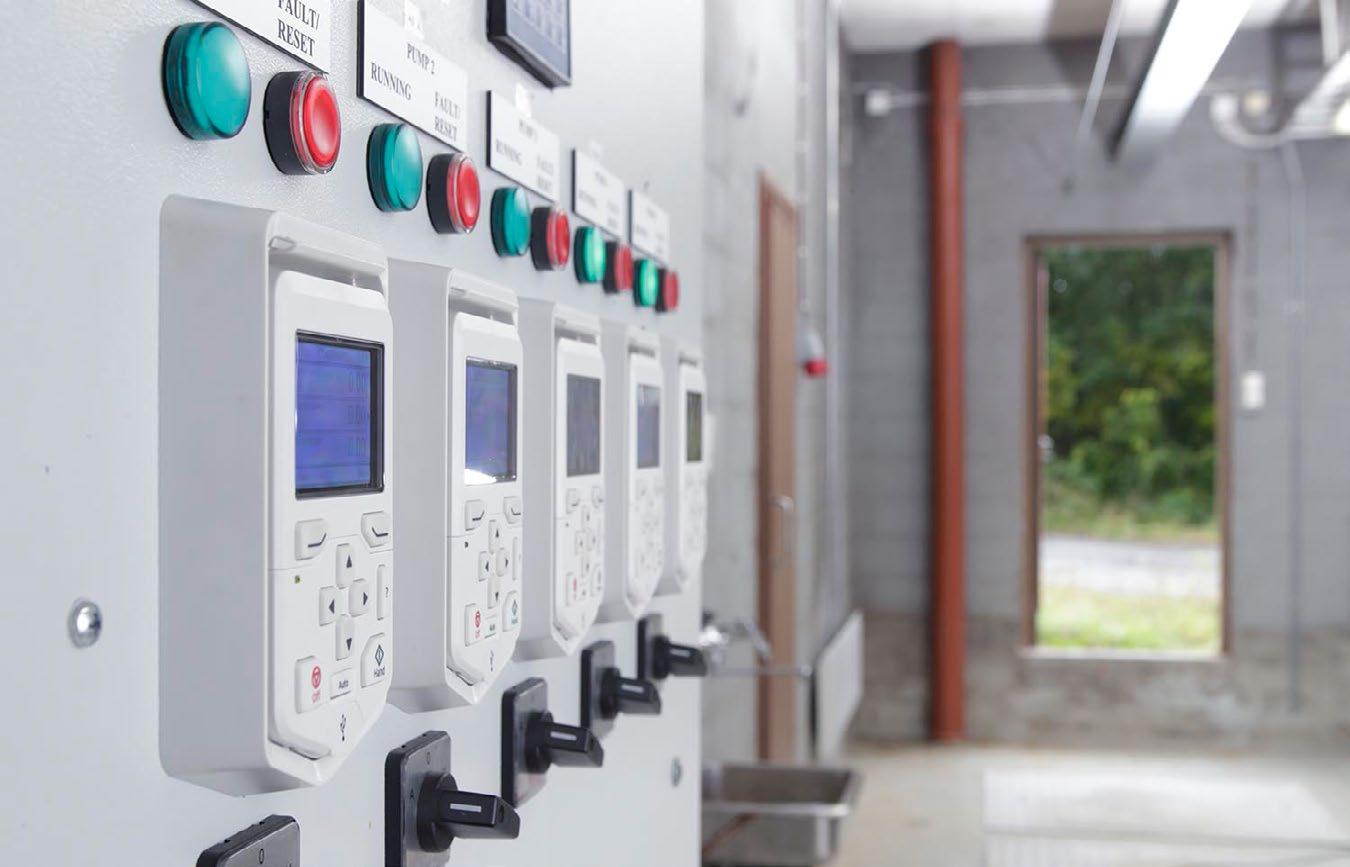
increased head loss across the partially closed delivery valve. To overcome this, the pump needs to work harder, thereby consuming far more energy than necessary, and leading to higher carbon emissions.
A variable speed drive, commonly known as a drive, can be used to electronically control the pump motor’s speed across the whole speed range. Flow rates can thus be regulated more effectively in response to actual demand, while pumping systems can be made more efficient by optimising the speed of the pump during times of low or high river levels, or for example to meet extraction licence restrictions. Many pumps do not need to be run at full speed all the time –water can be pumped at periods of low demand, or overnight. Because pumps are cube law applications, even a small reduction in speed can correspond to significant energy savings. In practice, running a pump at 80 percent speed uses 50 percent of the energy that it would if it were running at full speed. A large proportion of pumps in operation across the UK water network are run without a drive, and so vast amounts of energy are potentially being wasted every day.
Of course, reducing pump energy usage will not necessarily have a direct impact on river levels. However, drives can also be used to reduce required abstraction by reducing leakage across the network. Pressure is the main culprit in
causing leaks. Control this and you can prevent many leaks from occurring in the first place. Many pumping stations are set to operate on a programme that runs the pumps at a steady, high speed until the pressure gets up to the desired level. The pumps will then turn off and turn on again when the pressure drops below the specified set point.
This results in frequent starting and stopping, which in turn leads to more non-return valve activity, all of which leads to pressure transients that can cause pipe walls and joints to crack or separate. High flow rates are not needed all the time and lowering them can go a long way to keeping pressure in check. With a drive, leakage can be cut significantly as a result. Even a small reduction in pressure can have a significant knock-on effect. A 20 percent pressure reduction can cut leakage rates by up to 50 percent. In addition, it is also simple to automatically command the drive to reduce its pressure setpoint overnight, in low demand periods, to reduce leakage and energy usage further.
A drive can be set to produce a flow of water from the pump that offers the best combination of flow and pressure according to the circumstances and demand, and ramp up the speed slowly to the desired level. Pressures are reduced, avoiding forcing water through existing gaps, while a steady speed cuts the need for frequent starts. When starts and stops are needed, they are gentler and less damaging, reducing strain on equipment and prolonging its lifetime. By managing pressure levels more effectively, a drive can be used to prevent leaks from occurring in the first place. This means less water wasted, and less therefore needs to be abstracted.
To find out more about the ABB Energy and Optimisation Appraisal, or to discuss your company’s assets and energy usage in more depth, search for “ABB Water Challenge”.

Written By | NATASHA POSNETT
here has been international concern regarding microplastic pollution in our oceans over recent years, but much less attention is paid to the high levels of microplastics and their associated toxicity in our rivers. Approximately 80% of plastic pollution in our oceans originates from inland waterways –from landfills, waste treatment plants, sewage and littering. But why are we not as concerned with our rivers as our oceans? We must protect and bring awareness to river ecosystems, creating cleaner and toxic-free waterways.
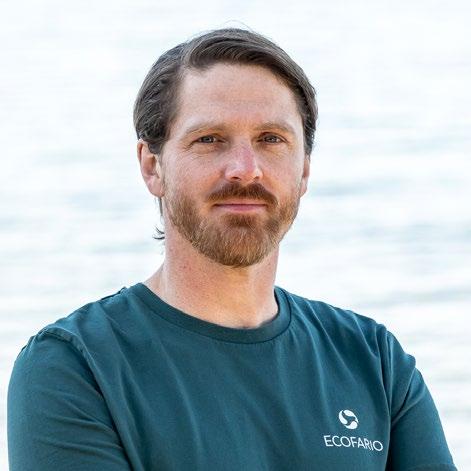
Microplastics are tiny plastic particles less than 5mm in size. But they are more than just small pieces of plastic; they have unique properties which make them dangerous for the health of humans, animals and the environment. One of the key characteristics is their high surface area to volume ratio which plays an important
role with how they interact with the environment around them and ultimately increases their chemical adsorption and biological uptake.
“Microplastics” has become a buzzword in environmental conservation. We have all heard about the negative impacts they have on ecosystems and human health and how they bioaccumulate up the food chain, moving from the smallest of species to the largest. We also know that microplastic particles have been found in every continent on the planet, in the blood of thousands of species, mothers breast milk, unborn foetuses, testicles and brain tissue. What we don’t know yet is the full extent of the issues.
From individuals taking action to global policies; all are essential if we hope to successfully combat microplastic pollution. Addressing the issue requires a mix of solutions from reducing plastic production, improving waste management and developing technologies to help clean up existing pollution.
ECOFARIO, a German startup, is providing an exciting solution. They are working to reduce microplastics from entering the freshwater environment and have developed a new type of separation process that significantly reduces microplastics and the associated pollutants in wastewater. The system is installed as an end-ofpipe solution in sewage treatment plants.
ECOFARIO’s innovation centres on a process that uses modified hydrocyclones, which are small devices that generate a strong centrifugal and fluid forces to separate microplastics from water efficiently.
I spoke to ECOFARIO’s Founder & CEO, Dr.-Ing. Sebastian Porkert, about their technology and its application to help remove microplastics from waterways:
“When I first heard about microplastics in our waters, I knew something had to be done. Microplastic pollution will have a negative longterm impact on our quality of life, health and global ecosystems.”
ECOFARIO’s filtration system can capture microplastics smaller than 5 micrometres. This level of precision ensures that even the tiniest particles are removed from water sources. The technology is designed to be both environmentally sustainable and easily scalable, which allows it to be implemented in various settings, from municipal water treatment plants to industrial facilities.
Conventional filtration methods, such as micro-, nano-, and ultrafiltration, all have technical and economical disadvantages, including low throughputs, high energy requirements and maintenance expenditures. These filters must be regularly cleaned and flushed as they tend to clog due to biofouling and scaling. Combined, this equates to a much higher cost than ECOFARIO’s method.
“Our technology will eliminate the residual microplastic contamination of purified water after wastewater treatment plants by another 85-95%. By not using any type of filter but only gravitation and fluid forces, we are able to remove microplastic particles with a comparable low energy footprint and a minimised climate and raw material footprint. As most microplastics in rivers derive from municipal and industrial wastewater treatment plants, our solution will sustainably purify the water quality of our rivers. Therefore, we aim to equip each wastewater treatment plant with our units!”
ECOFARIO’s high-efficiency separation technology and environmental protection work has already caught people’s attention, and they have been nominated for the German Sustainability Award!
“We are currently in the last steps for the first installation of a full-scale ECOFARIO unit for a
Continued on page 18
wastewater treatment plant (30.000 PE) in Bavaria. If everything runs smoothly, the unit will start up by summer 2025.”
Apart from wastewater, ECOFARIO is also active in the processed water sectors, such as the pulp- and paper industry and desalination.
“In the paper industry, some very promising customer units are running. They were built to reduce fibre losses, increase raw material efficiency, reduce process waste and optimise wastewater quality. In desalination, we plan to install our units before the filtration steps, which will help to increase filter lifetime, decrease the necessity for flushing sequences and minimise chemical consumption for filter regeneration.”
Microplastics may be small, but their impact is significant. The pollution they cause in rivers is a pressing environmental issue that demands further action. ECOFARIO’s technology is one innovative solution to combat this widespread pollution and protect our rivers and the countless species that rely on them. Addressing microplastics now ensures a healthier planet for future generations. Let’s wave goodbye to microplastics in our rivers and say hello to clean, toxic-free waters!





Written By | DARBY BONNER
Interconnected waterways like rivers, lakes, and reservoirs are vital to ecosystems and communities, with changes in one area affecting the entire watershed. LG Sonic, a global leader in water quality management, addresses this challenge with advanced algae control systems in over 96 countries. Their approach combines online water quality monitoring with ultrasonic technology to effectively reduce harmful algal blooms by up to 95%, while also decreasing pH, total suspended solids, and chemical use. We spoke with Lisa Brand, Chief Technology Officer and Cofounder, to learn more about their innovative solutions.

environmentally safe approach sets LG Sonic apart in a field where chemical treatments have long been the norm.
The journey to LG Sonic’s current success is a story of innovation, collaboration, and persistence. The company’s flagship product, the MPC Buoy, emerged from a vision to adapt pond treatment technology for use in larger bodies of water. This ambitious project led LG Sonic to approach the European Commission for support through the FP7 project, partnering with universities in Poland, Norway, Greece, and France.
Lisa explained that in Greece, researchers cultivated blue-green algae in large containers, testing various ultrasonic frequencies, angles, and amplitudes. Meanwhile, collaboration with a Polish institute specialising in lake ecosystems led to the design of the initial database that forms the foundation of the MPC Buoy system.
LG Sonic’s ultrasound technology operates on a fascinating principle. Algae, in their natural cycle, move to the water surface for photosynthesis and growth, then descend to the bottom of the water column for nutrients. The ultrasonic waves emitted by LG Sonic’s devices disrupt this cycle by creating a sound barrier in the water, effectively blocking the algae’s access to sunlight and nutrients, and causing them to sink to the bottom and die off without releasing toxins.
Crucially, this method is entirely safe for humans and aquatic life. This 100%
The result is a high-tech buoy that does more than just emit ultrasound. It continuously monitors water quality, uploading data to LG Sonic’s online server. This information is then processed to automatically select the most effective ultrasonic frequency program for the specific conditions.
The MPC Buoy collects water quality information every 30 minutes, measuring crucial parameters such as Chlorophyll-a (green algae), Phycocyanin (blue-green algae), pH level, water temperature, turbidity, and dissolved oxygen. For really large and open areas like rivers or watersheds, Lisa said they integrate satellite remote sensing to map out geographic areas effectively.
The versatility of LG Sonic’s technology allows for application in water bodies of various sizes. Each MPC Buoy can treat water within a 500-metre diameter, covering approximately 20 hectares. For larger reservoirs, multiple buoys are deployed.
One of LG Sonic’s most impressive operations is in the Dominican Republic, where 50 MPC-Buoys work collectively to manage a 7 km² reservoir. This scalability demonstrates the technology’s potential for addressing water quality issues in even the largest bodies of water.

LG Sonic’s vision extends beyond individual lakes or reservoirs. Lisa emphasised the importance of looking at the entire watershed and fostering collaborations to protect aquatic ecosystems and health. This holistic approach involves not just treating poor water quality but understanding and addressing the root causes.
In addition to the MPC Buoys, LG Sonic employs onshore water quality monitoring stations to analyse river systems and measure nutrients, heavy metals, manganese, phenols, and other pollutants. This helps identify pollution sources, enabling governmental bodies and water boards to implement effective regulations.
LG Sonic has also embraced remote sensing technology, beneficial for large lakes or riverine systems with dynamic water flow. Their remote
sensing department continuously develops methods to measure water parameters via satellite imagery, identifying algal bloom hotspots for targeted treatment.

In 2020, a leading municipal water treatment company in Malaysia implemented the MPC-Buoy system to address the growing issue of algae blooms, particularly harmful algal blooms (HABs), in the region. The initiative focused on preserving water quality in off-river storage systems by using ultrasound technology to treat river-sourced water stored in large reservoirs near water treatment plants.
Key Points:
• Malaysia faces increasing Harmful Algal Bloom (HAB) events due to ideal climate conditions
• MPC-Buoy uses ultrasound technology to treat river water stored in off-river ponds and reservoirs
• The system prevents algae intrusion into water treatment plants through monitoring, prediction, and control
• Real-time water quality monitoring occurs every 30 minutes, measuring crucial parameters like Chlorophyll, Phycocyanin,

pH, Turbidity, Dissolved oxygen, and Temperature
• This data-driven approach enables prompt responses to water quality changes and informed decision-making
Benefits:
• Long-term solution for algae treatment
• Fills a gap in Malaysian water management strategies
• Protects aquatic ecosystems, human health, and local economies
• Provides a sustainable framework for ongoing monitoring and mitigation
The success of this project, initiated by Hydro Nusantara Sdn Bhd in partnership with LG Sonic,
demonstrates the potential for technological innovation in addressing environmental challenges.
The growing challenges in managing global water resources have made sustainable solutions more critical than ever. LG Sonic’s innovative technology, data-driven strategies, and dedication to holistic ecosystem management position them as leaders in this essential field. Looking ahead, LG Sonic aims to expand its innovative solutions to more locations, focusing on regions like Africa. Their goal is to provide sustainable ways to secure water resources and promote the adoption of innovative technologies in areas where they’re most needed.
Discover more here: lgsonic.com
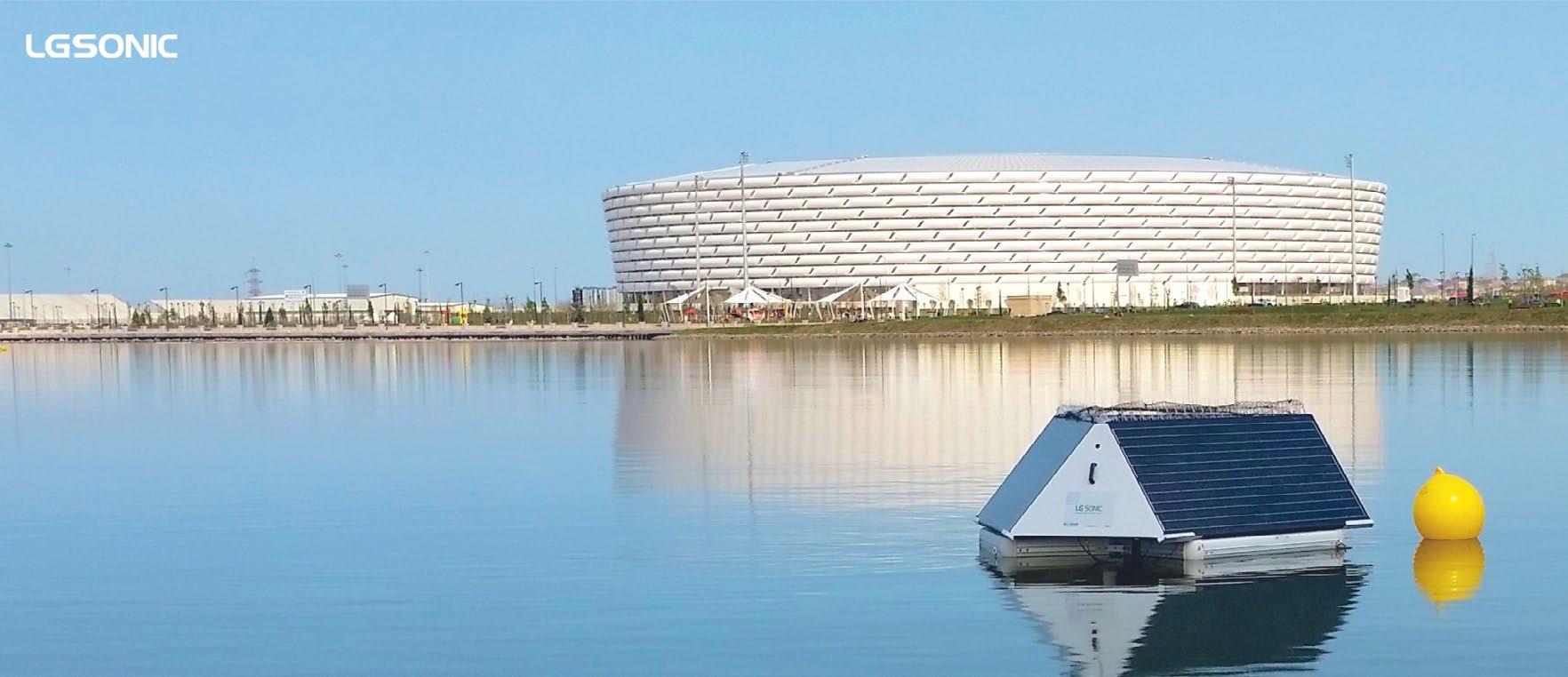


Written By | DARBY BONNER
n a world where environmental consciousness and public health are paramount, Wessex Water has taken a pioneering step forward. The company, which provides water and sewerage services to 2.8 million customers across the South West of England, has launched an innovative AI-based water quality monitoring system at popular swimming locations. This cutting-edge technology hopes to revolutionise how we understand and interact with water environments.
To learn more about this initiative, we spoke to Ruth Barden, the Director of Environmental Strategy at Wessex Water.
Ruth explains the groundbreaking shift from traditional methods to AI-based monitoring: “AI-based monitoring uses data received in real-time from sensors within the river or the sea, meaning information is available to swimmers at point of use.” This stark contrast to conventional laboratory testing, which can take 3 to 4 days to produce results, highlights the system’s immediacy and relevance to users.

The AI platform at Warleigh Weir is a prototype for this innovative approach. Ruth details its functioning: “The Warleigh Weir AI platform collects data from several different sources to learn the relationships between these data to infer bacteriological water quality. “This includes data collected at 30-minute

The new approach addresses a critical shortcoming of the current classification system for Bathing Waters. “The current system uses samples collected by the Environment Agency between May and September,” Ruth said. “This means that swimmers can only be sure of the summer water quality retrospectively. Whereas the AI indicates at the time they go swimming rather than months later.”
intervals from the water quality sensors, measuring pH, dissolved oxygen, turbidity and ammonium and manual water quality samples which are analysed for a wider set of parameters, including faecal indicators such as E.Coli and intestinal Enterococci.”
“The system’s impressive 87% accuracy in predicting bacteria levels is attributed to its comprehensive data
Continued on page 24
integration. “Data is collected at Warleigh Weir and from locations up to 10 km upstream,” Ruth explains. “This means that there are thousands of data points ingested by the AI platform on a daily basis to ‘learn’ about these relationships and patterns.”
Wessex Water is expanding its vision beyond riverine environments. Ruth outlines plans to adapt the technology for coastal sites like Bournemouth and Boscombe piers: “We are using Warleigh Weir as the template for the Bournemouth and Boscombe systems: using data collected via sensors and spot samples to link with asset and environmental data.”
The coastal application introduces new challenges and opportunities. Ruth explained, “The buoys at Bournemouth and Boscombe Piers include two sensors which measure similar parameters but we are also trialling a Proteus multiparameter probe which directly infers bacterial concentrations”. This adaptation demonstrates the flexibility and scalability of the AI-based approach.
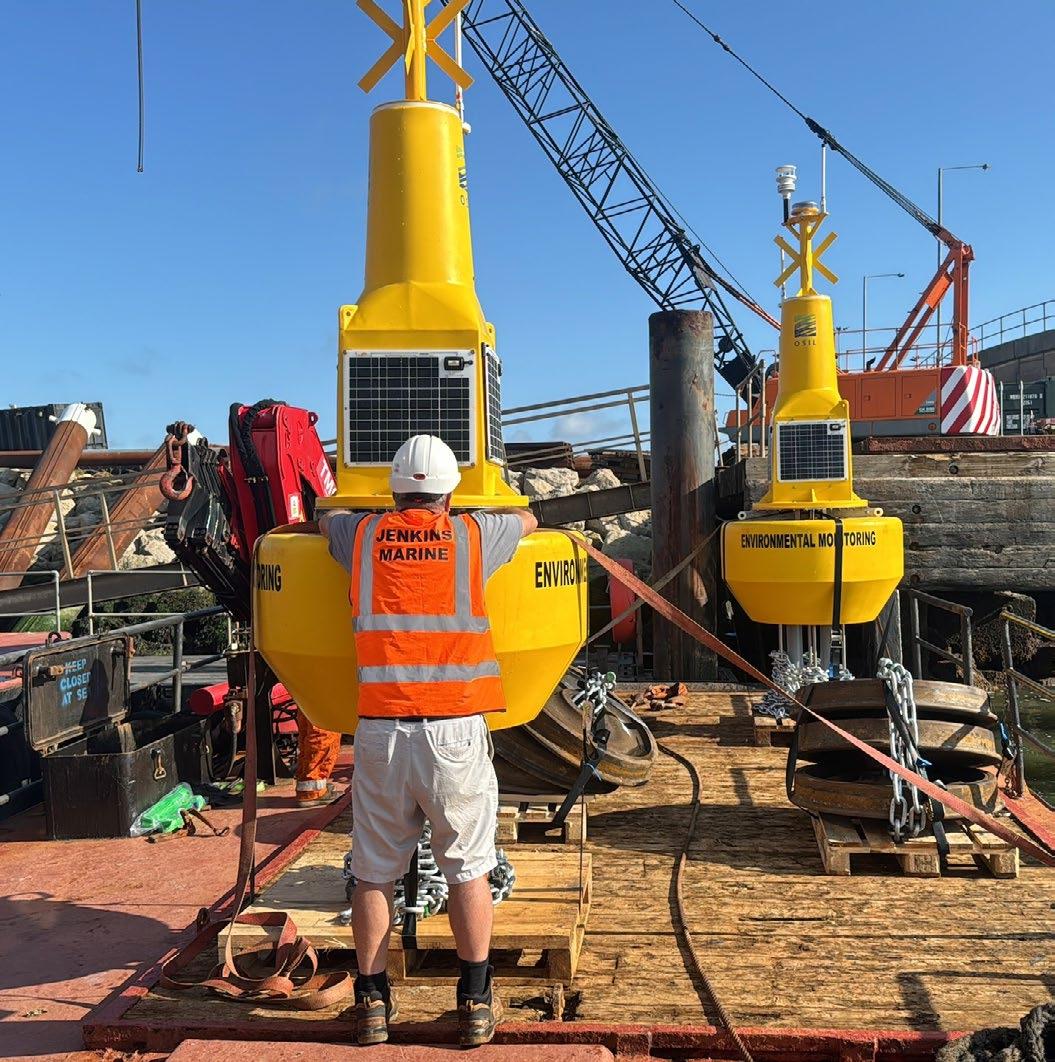
Pier, UK.
Wessex Water’s water quality buoys at Bournemouth and Boscombe have been created in collaboration with Bournemouth, Christchurch & Poole (BCP) Council, Ikania and UnifAI Technology
The real-time nature of the data has significant implications for public health and safety. Wessex Water can use the real-time data to help swimmers and beachgoers
make informed decisions about whether or not to swim. It also allows them to have a better understanding of all of the risks including water temperature, flow or currents, and water quality.
This information is made accessible through a userfriendly WebApp, which translates complex data into easily understandable information. At Warleigh, the app uses a simple “Swim Alert” system, with a yellow text box indicating when water quality does not meet the sufficient standard required by the Bathing Water Regulations
Wessex Water uses a similar approach for the Bournemouth and Boscombe data, using the Sea Check app developed by UnifAI Technology with BCP Council.
The potential of this technology extends far beyond informing swimmers. Ruth sees great promise in identifying and addressing various sources of water pollution. “We are already seeing this at Warleigh Weir, where the data indicates
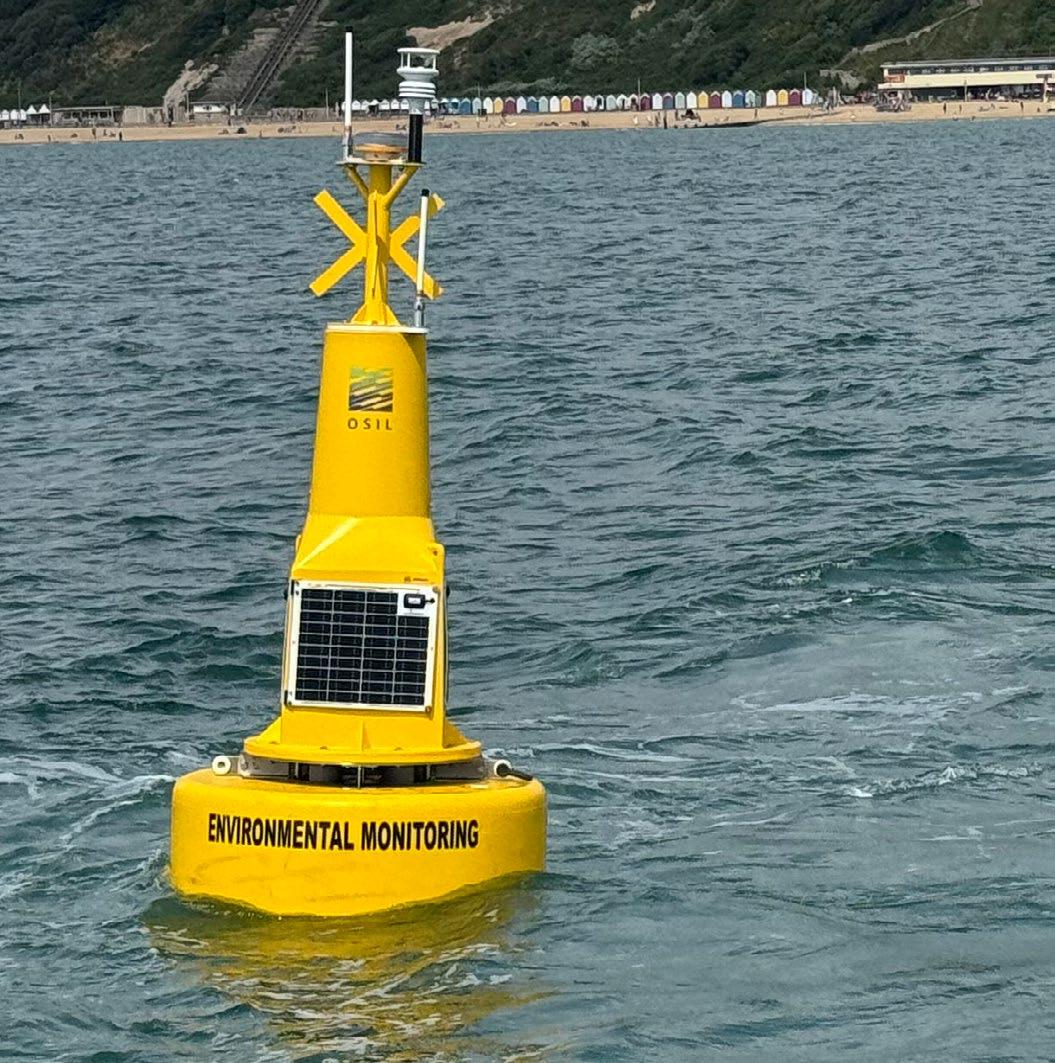
specific tributaries which contribute more elevated bacterial loads compared to other watercourses,” she says.
Ruth emphasised the importance of collaboration. She explained, “It is essential that we work with the local stakeholders to ensure this approach is installed at the most appropriate locations concerning safety. We will only provide this technology where there is support from the landowner or body responsible for the recreational activities and at sites deemed safe and appropriate.”
In addition to the stakeholders above, Wessex Water is also partnering with Bristol City Council, Farleigh & District Swimming Club, Fordingbridge Town Council, and local community groups.
Looking ahead, Ruth envisions exciting developments for this technology. “We would like to develop this further to enable water quality prediction services or water quality forecasts at popular locations, similar to a weather or pollen forecast,” she says. “This will provide essential information and warnings to recreational users, and also the shellfishery industry”.
Currently, sensors are being developed to monitor more parameters such as nutrients, oils, hydrocarbons, and chemicals. Ruth said, “When linked to AI, we can track or
predict wider pollution sources and protect water abstraction locations from pollutants”.
Wessex Water’s AI-based real-time water quality monitoring is a major advancement in environmental management and public health. By providing instant, accurate data to swimmers and beachgoers, the system helps people make informed decisions about their activities. Its ability to detect and address pollution sources offers significant benefits for water quality management.
As this technology expands, it sets a new standard for protecting aquatic environments, enhancing public safety, and contributing to a deeper understanding of water ecosystems for more effective environmental protection strategies.


Written By | NATASHA POSNETT

All wildlife, including humans, depend on unpolluted freshwater sources to survive. Clean rivers are vital for our health and for ecosystems to thrive. Unfortunately, river water quality across the UK is often below standard due to high levels of pollution, unsustainable practices and climate change. Meaningful change requires a collaborative effort, and one organisation, the Westcountry Rivers Trust, is working towards this by engaging multiple stakeholders, including landowners and farmers. These partnerships are crucial for sharing expertise and ensuring widespread and long-lasting benefits.
The Westcountry Rivers Trust is a charity dedicated to restoring and safeguarding the freshwater environments of the Westcountry for the benefit of people, wildlife and local economies. Over the next five years, the organisation will continue its Upstream Thinking (UST) project and collaborate with landowners and farmers across seven crucial drinking water river catchments: the Dart, Exe, Fowey, Otter, Roadford, Tamar and Tavy catchments.
I had the opportunity to speak with UST3 Project Manager, Annabel Martin, and Communications and Marketing Manager, Josie Purcell, to learn more about the project and its implications for rivers and people in the area.
Annabel explained the Upstream Thinking (UST) Project: “The UST project is a partnership programme that has been running since 2010 in Devon and Cornwall. Through UST, South West Water provides funding for farm advisors to proactively work with farmers to improve land management so that the risk of pollution is reduced. Following the success of Upstream Thinking 1 (2010-2015) and Upstream Thinking 2 (2015-2020), we are currently continuing our work with South West Water to deliver the third phase of the Upstream Thinking (UST) initiative, running from 2020 to 2025.”
The Westcountry Rivers Trust currently has seven farm advisors working in catchments covering approximately one-third of the land area of Devon and Cornwall. The advisor’s ultimate goal is to minimise nutrient losses to the environment while also saving the farmer money. Their job starts by visiting a farm and talking to the farmer to understand their current practices and how things are run day-to-day. The information they acquire is used to assess what help is required and the steps they need to take to reduce pollution entering the rivers.
“The advisors’ job is a tough one; they need to understand farm businesses extremely well, as farmers are not inclined (and rightly so) to listen to people who don’t understand the challenges they face!”
One of the advisor’s other roles when exploring farms is to identify valuable areas where new habitats can be created, such as wetlands and woodlands,
mainly where these can be located to provide linking corridors between areas of high wildlife value.
“Whole farm planning is the aim, balancing profitable food production with protection and enhancement of soil, water and biodiversity. The advisors are unlikely to use the word ‘rewilding’ when they visit a farmer - the word tends to rile farmers and implies an end to their livelihood. Instead, advisors will look at the array of grant funding that is available to encourage farmers to enhance wildlife habitats or create new ones.”
UST has grant funding, which can be used for any project that will reduce pollution risk or enhance habitats. Recently funded projects have included: pond and scrape creation within wetland corridors; fencing of rivers to exclude livestock; tree-planting in field corners and along watercourses; and new buildings to store manure, meaning that the farmer doesn’t need to spread manure in winter which heavily reduces soil damage and the risk of nutrient run-off.
“2024 marks 30 years for our charity. We have done so much for the region’s rivers in this time, but ongoing issues mean our work is not done yet.”
The Westcountry Rivers Trust and their UST project has improved water quality, enhanced biodiversity, provided economic benefits for farmers and raised awareness about the importance of upstream actions for maintaining water quality. The success of this project can act as a model for similar initiatives across the UK, which will only become even more critical as pressures such as climate change, population growth and urban development increase. UST is an excellent example of a community-focused approach that can make a real difference in environmental conservation.
The success stories are reassuring to hear, but there is always room for improvement!
“Our current system for the future of food provisioning, resource protection, biodiversity, and climate resilience has not been succinctly joined up. Devising a land use framework whereby farm productivity grants, environmental subsidies and the planning system are integrated would help. There also needs to be a call to arms to farmers to continue to produce food in a more sustainable manner; exploring different enterprises and providing diverse food stuffs in a landscape that is laced with wildlife corridors and different sized pockets of wilder land.”
The Upstream Thinking project is just one of the many fantastic initiatives the Westcountry Rivers Trust is working on. One of their other projects - the Westcountry Citizen Science Investigations- allows citizens to get involved and play their role in the conservation of rivers. It was initially launched in 2016 and they now have 594 people actively monitoring freshwater environments across Cornwall, Devon, Somerset and Dorset. This information helps the charity build a better picture of the health of the region’s rivers and highlights where intervention may be needed. It is a valuable tool which really brings rivers to life.

To find out how to get involved and be a part of this important work, visit: https://wrt.org.uk/ westcountry-csi/
To support Westcountry Rivers as an individual or business, please visit: https://wrt.org.uk/support/
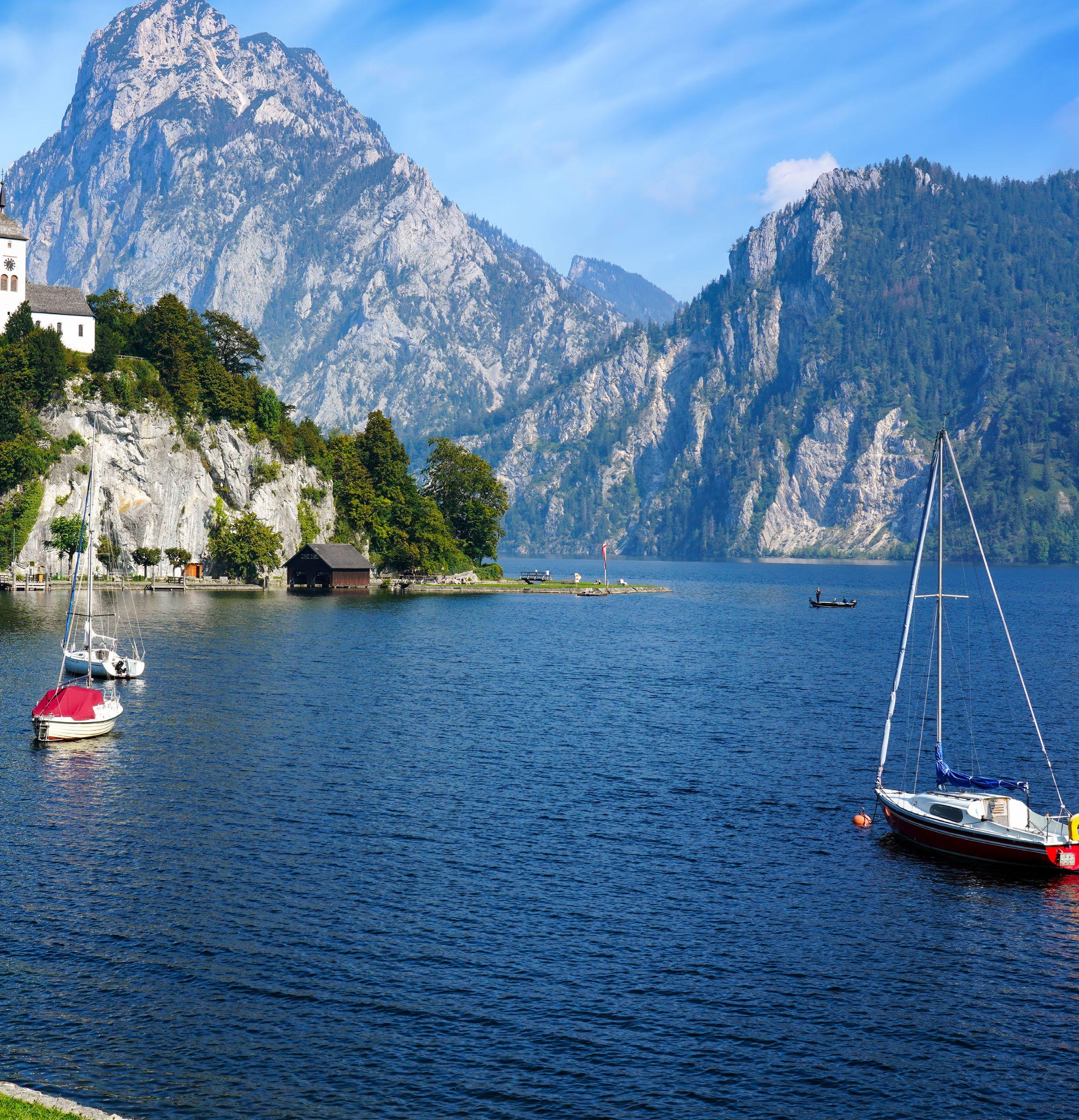
Written By | MARTIN SHUTTLEWORTH
It is no secret that the combustion engines used to power boats create problems in lakes and rivers, spilling noxious fumes, oil, and fuel into the environment. If that isn’t enough, the noise and vibration disturb wildlife and annoy people trying to relax in peaceful surroundings. In response, some European inland waterways now see bans on internal combustion engines as a way to protect these delicate environments.
While stricter environmental regulations and outright bans are solutions, countless people use boats on inland waterways for recreation, angling, and travelling from place to place. How can we keep rivers clean while allowing people to enjoy boats? Horst Pesendorfer of Volta future, an Austrian company specialising in electric boat engines, discusses the transition to e-propulsion.
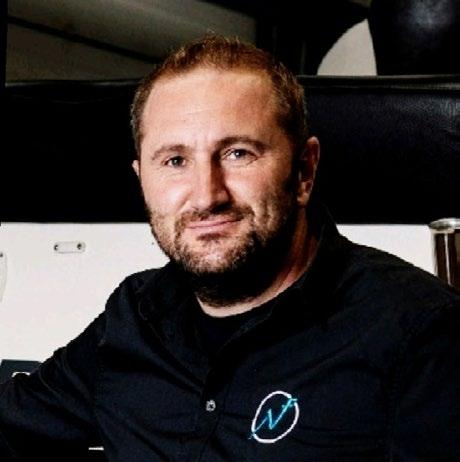
One solution to the internal combustion question is electric propulsion, which allows people to carry on boating without many of the associated problems. Indeed, the European Union, through its Green Deal, includes waterways in its transition to sustainable transportation. At least 20% of newly licensed motorised boats will include an e-drive by 2025, reducing oil and fuel spills while cutting emissions of greenhouse gases and other pollutants.
However, converting boats to electric power can be timeconsuming and expensive, so ways to speed up the transition are very welcome. Inspired by the pristine waters of Lake
Traunsee, Volta future’s invisible Waterline Outboard Power drive (iWOP) system will contribute to cleaner, healthier, and much quieter waterways.
Recreational vessels are a common sight on rivers and lakes because spending time on the water is a great way to escape the stresses of modern life. Unfortunately, while most boatowners love rivers, their vessels are an often-overlooked source of pollution. As Horst notes:
“Presently, recreational vessels, predominantly powered by internal combustion engines reliant on fossil fuels, release significant quantities of carbon dioxide into the atmosphere. These watercrafts emit between 10 to 15 times more greenhouse gases per person and per km travelled than land vehicles, with significant losses of both oil and fuel into the environment (20-30% of the fuel and oil consumed). Leisure boats emit other pollutants such as NOx, SOx, and particulate matter, which cause serious health problems for humans such as respiratory diseases and cancer, and contribute to lake acidification.”
Another problem with boats is noise, which can spoil the experience of people seeking peace and tranquillity around rivers, canals, and lakes. Acoustic pollution can affect aquatic animals, changing their behaviour and affecting feeding, breeding, and roosting. Aware of these problems, governments are starting to take legislative action.
In response to the problems with combustion engines, the EU and many member states have drafted legislation to reduce the impacts of boats on inland waterways and the marine environment. Horst lays out some of the new regulations affecting boat design:
“Regulations such as the EU’s Recreational Craft Directive (RCD) will mitigate the environmental impact of recreational vessels, specifically targeting the emissions that contribute to air and water pollution. Moreover, many countries in the EU are implementing measures to address the environmental impact caused by both recreational and commercial vessels. Countries like Germany, Austria, Italy, France, and Spain are rapidly acting against pollution in marine environments, lakes, and other internal waterways.”
As with land transportation, electrifying boats solves many problems and creates a better balance between society, recreation, and the environment. Horst notes:
“Electrification emerges as a compelling solution, providing cleaner and more sustainable alternatives compared to traditional fossil fuel-powered engines. Embracing electric propulsion within recreational and commercial boat industries can substantially reduce GHG, alleviate air and water pollution, and aid in the preservation of fragile aquatic ecosystems.”
Horst believes that electric propulsion provides many additional benefits for boatowners and the environment, making e-drives increasingly attractive:
“They are environmentally friendly, producing zero emissions

during operation, and operate quietly, enhancing the overall boating experience by minimizing noise pollution. Electric drives are also highly efficient, converting a larger portion of energy into propulsion compared to combustion engines.”
The benefits do not stop there, and electric propulsion provides several additional benefits besides circumventing bans:
“While the upfront cost of electric propulsion systems is higher, they have lower operating costs in the long term due to cheaper electricity and less maintenance. Additionally, electric drives produce minimal vibration, resulting in a smoother ride and less wear and tear on the boat's components. Furthermore, with restrictions on combustion engines already in place on inland waters, electric drives provide a viable alternative for boaters seeking to enjoy their time on the water.”
However, challenges including the lack of supply chains, difficulty retrofitting, and the need for new designs are slowing the transition.
Although e-drives overcome many problems, there are still problems that the industry needs to consider. Horst understands these fully:
“Electric boat propulsion presents a promising solution for environmentally friendly maritime transportation, yet it encounters several challenges. Firstly, battery technology requires further improvement to enhance energy density, which directly impacts the limited range of electric boats. Additionally, the lack of charging infrastructure poses significant hurdles for widespread adoption.”
Horst also points to other issues that electric propulsion needs to overcome if it is to deliver the promised impacts:
“Optimizing power and performance to match combustion engines remains a technical challenge. Regulatory frameworks vary, necessitating standardization to facilitate adoption. Lastly, raising awareness and educating stakeholders about electric propulsion's benefits are crucial. Addressing these challenges through collaboration and innovation will unlock the full potential of electric boat propulsion, ushering in a greener and more sustainable maritime industry.”
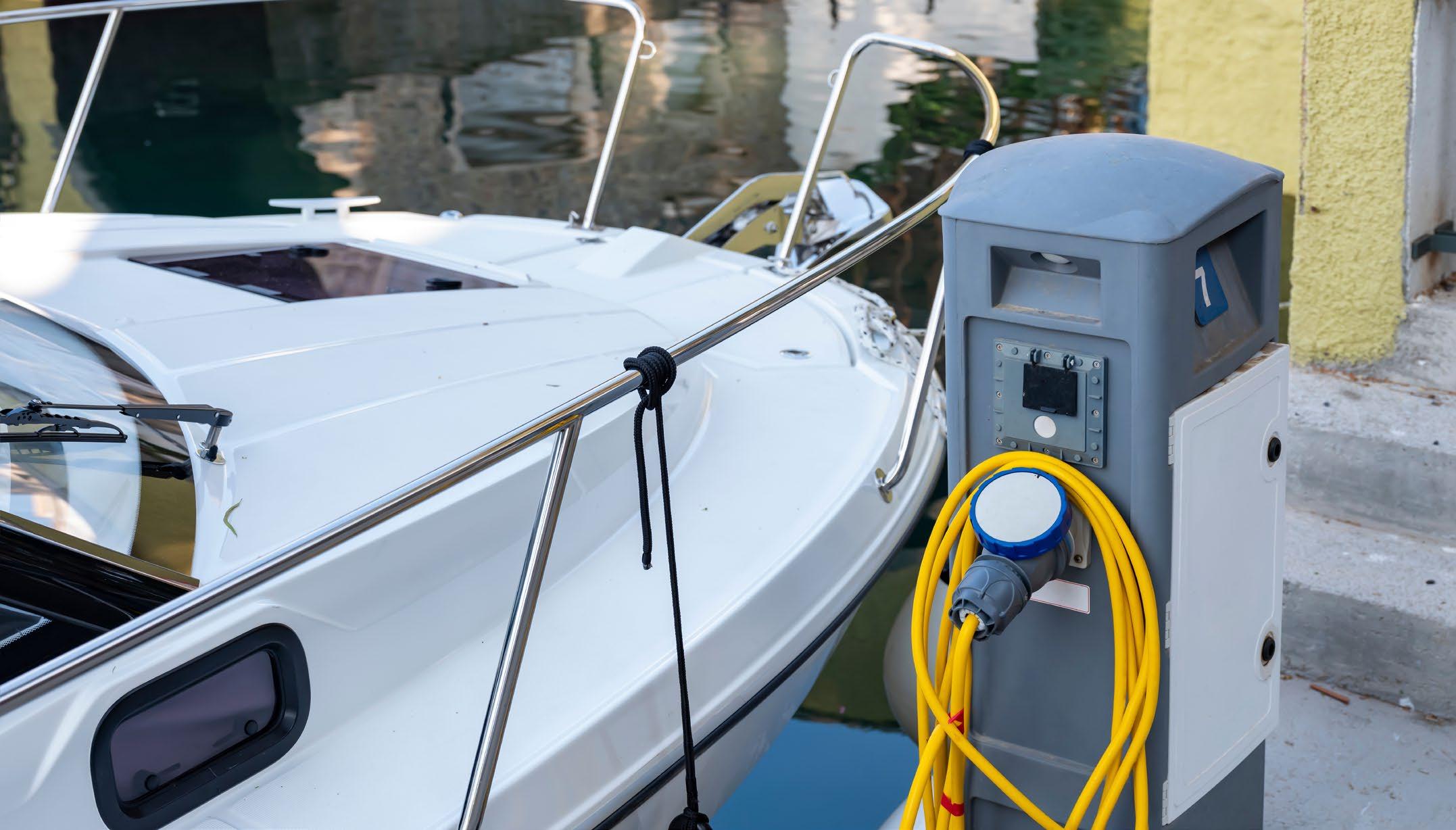

When developing the iWOP, these challenges shaped Volta future’s approach towards delivering affordable and efficient systems without compromising on performance or the environmental benefits:
“We are actively addressing this issue with our innovative iWOP technology, diligently working to reduce manufacturing costs, especially in high-volume batch sizes. Our aim is to achieve cost competitiveness comparable to conventional internal combustion engine outboards.”
Volta future's iWOP is a fully integrated, lightweight outboard motor that removes the upper section found in traditional outboards and places the entire motor housing at waterline level. The compact design maximizes the available space for batteries, extending range and increasing efficiency, while the oil free system and double reliability reduces maintenance costs. Horst notes that:
“Importantly, the design is fully operational and ready-to-use so that it can be fitted to most vessels, offering the benefits of electrification without changing the design. Our drive forms a single unit with the boat and can be fitted to boats with a transom (outboard motor) as well as boats with (normally) inboard motors instead of the sterndrive. This provides significant benefits for shipyards since the design of the boat does not have to be adapted to the engine, as is currently the case.”
This design offers several distinct advantages:
“Up to a 15% increase in efficiency is achieved by avoiding mechanical gears and shafts, eliminating transmission losses found in most current electric motors, which are designed based on the inheritance from combustion engines. As a side note, the mechanical compactness and simplicity of iWOP achieves a 22% weight reduction compared to ICEs in the 220-kW range.”
With this new design, Horst and his cofounder, Thomas Bergmair, intend to build upon their technology, helping Volta future make inland boating cleaner and more enjoyable for everyone:
“Overall, electric drives represent a compelling combination of environmental sustainability, performance, and costeffectiveness, making them a promising choice for the future of boating. Now, we can reach a production capacity of 100 iWOP units annually and have the potential to scale up to 2,500 units yearly without relocating. Our team are enthusiastic about the iWOP project and have a strong passion for environmental conservation.”
Written By | MARTIN SHUTTLEWORTH

On inland rivers and lakes across the world, invasive species are a growing problem, causing ecological damage, affecting water quality, and devastating native species and food webs. From algae and plants to invertebrates and fish, a species in the wrong place can cause untold damage. By posing such a huge threat to ecosystems, invasive species ultimately affect the economies of local communities reliant on fishing and tourism.
Edgar Rudberg, Ph.D., based in Minnesota, has a passion for reducing invasive species in rivers and preserving the delicate balance of ecosystems. Using a DNA monitoring system to help detect unwanted organisms and a smart cleaning system for boats to help stop them transferring material, he set out to solve this problem and keep rivers and lakes healthy.
The problem of invasive species is often overlooked, but it is an insidious and ongoing threat to
ecosystems around the world. Edgar points out some of the issues:

“Invasive species disrupt natural ecosystems, foul infrastructure, and can impede recreational boating/angling. Overall, invasive species are the most costly natural disasters, even more than fires, hurricanes, and floods.
Stopping the problem requires a variety of different approaches, including better monitoring to identify where it is happening, and ways to stop the transferal of species. To help detect invasive species before they create wider problems, NS2 offers a modern and thorough approach for monitoring waterways.
One way of monitoring pollution in rivers and lakes is though testing environmental DNA (eDNA). This can monitor biological activity in water and look for pathogens and species that should not be there. Previously, this involved taking samples and sending them to labs, but the process is expensive, time

consuming, and sporadic.
As Edgar points out, one of the main benefits of NS2’s technology is the low cost and convenience, which overcomes the problems with traditional sampling techniques.
“Traditional sampling requires a human to either take the sample or process samples. We take the human out of the equation and thereby shorten the time between sample and answer. We help our customers connect autonomous high-frequency sampling data with geospatial data to better monitor, predict, and mitigate biological activity.”
NS2’s Tracker is a field deployable system connected to the web that monitors eDNA in real time and gains a better picture of what is going on beneath the surface of the water.
“We use droplet digital PCR and draw samples from the environment as often as every fifteen minutes and give sample to answer within an hour. We monitor for environmental DNA and RNA, and our technology is agnostic to the specific species. As long as there is a primer and probe available in the market or in the literature, we can monitor it.”
The technology is proving useful for many sectors that need to know what is happening in rivers and streams because of its versatility and ease-of-use:
“Our technology can be used in a variety of sectors such as wastewater management, aquaculture, natural resources management, and marine management. We can monitor anything from toxic algae to invasive species. We can also monitor for biology one does want and need to protect such as threatened or endangered species.”
While better monitoring is one way to stop invasive species, another important barrier is stopping them from being transferred in the first place. One of the main ways in which they are transferred is boats travelling from waterway to waterway.
“Recreational boats are one of the most common vectors for transferring invasive species between waterbodies. In our lakes, streams, and rivers, invasive species are often transported unknowingly by recreational boaters and anglers who do not clean, drain, and dry their vessels.”
The CD3 Waterless Cleaning Systems allow boatowners to clean their boats and slow the spread of invasive species. The user operated equipment includes a wet/dry vacuum and tools with internetconnected smart technology to keep track of cleaning frequency and provide alerts.
“Our larger units (Wayside, trailer, and Outpost) are all internet connected with sensors and gauges to measure both their use and their functionality. Thereby providing owners with insight into how often tools are used and to give them a sense of their return on investment.”
Edgar realizes that technology is not enough and that it is important to educate boat users about the dangers of transferring invasive species.
“We offer both digital (online educational platforms based upon behavioral psychology to incentivize action) and infrastructure solutions (cleaning systems to empower boaters to clean, drain, and dry) to governmental agencies. Our systems act as educational billboards both physically and digitally to help raise awareness on invasive species.”
With constant monitoring of waterways, better cleaning processes, and increased public awareness, we now have more and more ways to slow the spread of unwanted organisms. While it is always going to be difficult to stop entirely, paying attention to invasive species is a crucial element of combatting river and lake pollution, helping the environment and local communities continue to thrive.

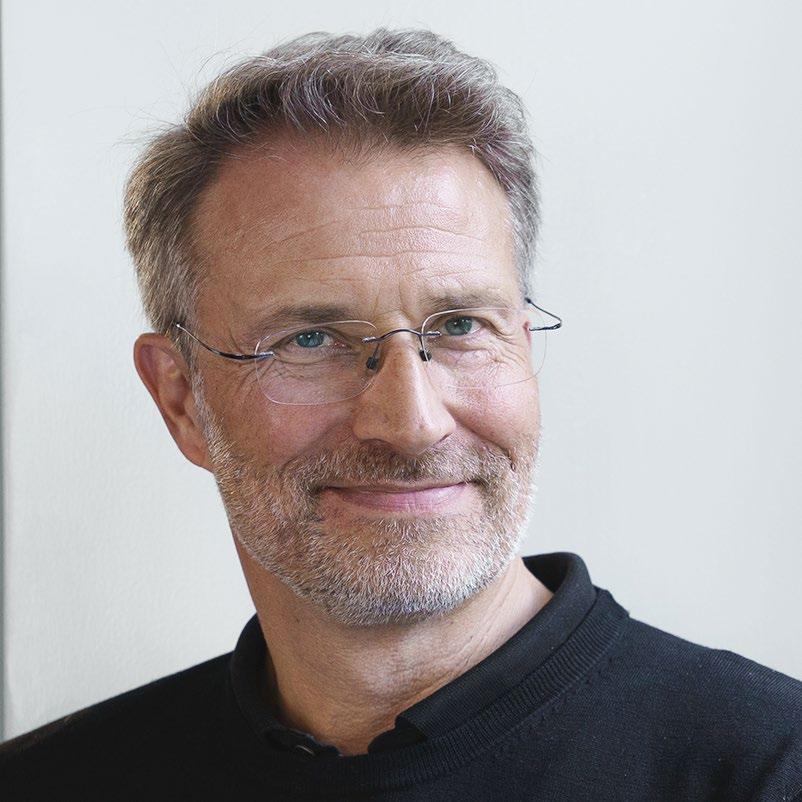



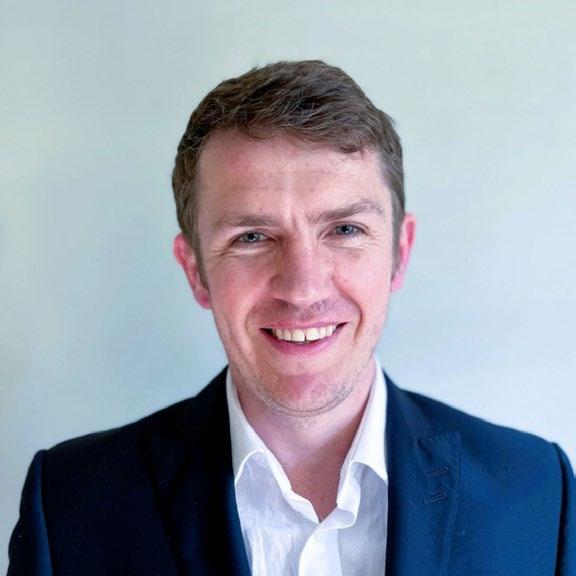
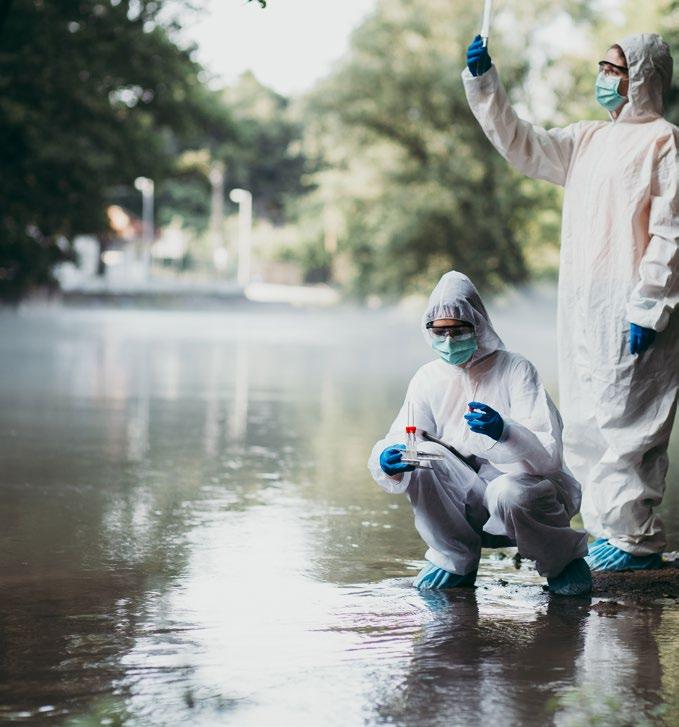
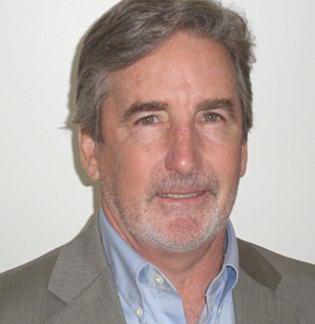






This edition examines the urgent need for policy reform and cutting-edge technology to restore river health. Our experts explore the challenges of balancing economic development with river ecosystem conservation, highlight community-based initiatives making a difference, and address key pollution sources threatening our waterways.

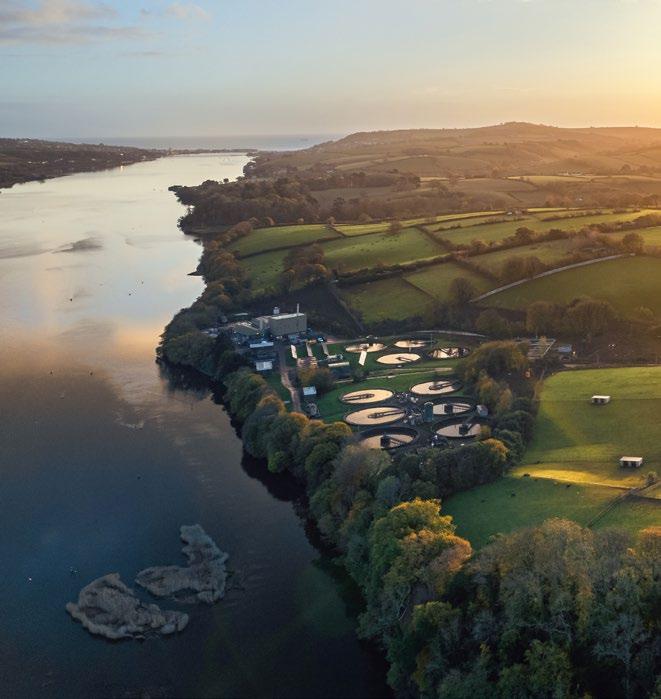
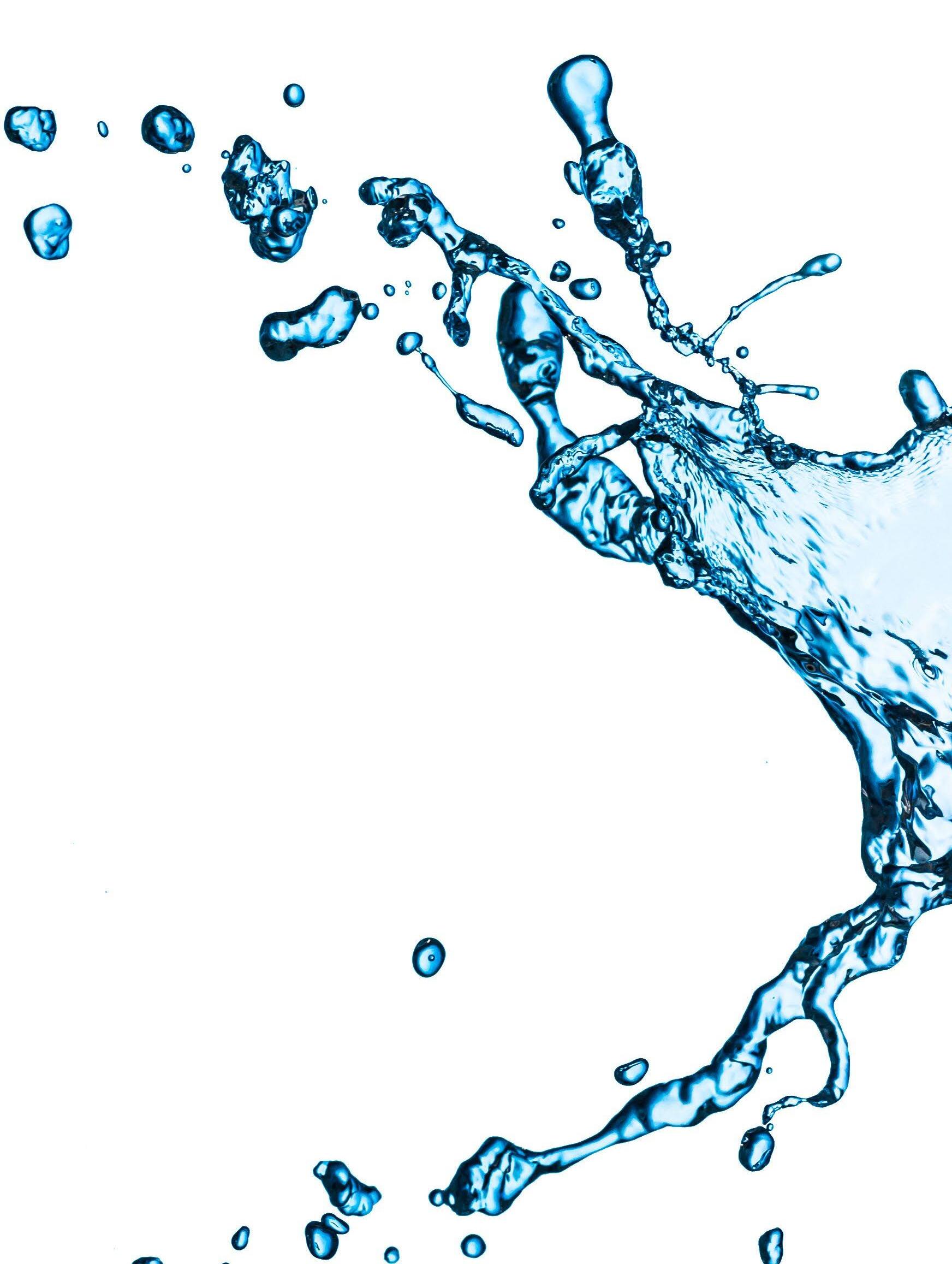
Watersight CEO
What are the most significant sources of pollution affecting rivers in your region?
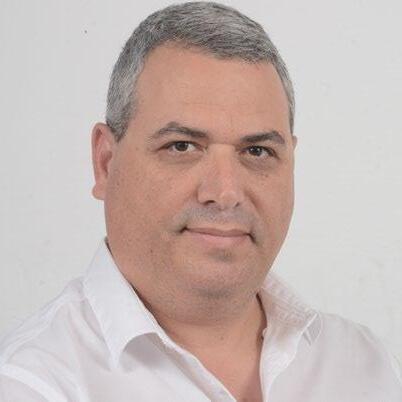
In Israel, one of the most significant sources of pollution affecting rivers is agricultural runoff. The country’s intensive farming practices, particularly in the northern regions, contribute to the contamination of rivers like the Kishon and Alexander. These rivers receive large amounts of fertilizers, pesticides, and animal waste from nearby agricultural lands. This runoff introduces excessive nutrients, such as nitrogen and phosphorus, into the water, leading to eutrophication, which depletes oxygen levels and severely impacts aquatic life. In addition, the overuse of water resources in agriculture has led to reduced river flow, exacerbating the concentration of pollutants.
What innovative technologies are being developed or implemented to monitor and improve river water quality?
Innovative technologies are crucial in monitoring and improving river water quality, and Watersight.ai’s Acquiring solution stands out as a game-changer. This cutting-edge technology provides real-time monitoring of water quality through a network of IoT sensors and AI-driven analytics. Aquaring can detect pollutants at their source, allowing for timely interventions to prevent widespread contamination. Moreover, its predictive capabilities enable the early identification of potential pollution events, helping to mitigate their impact before they escalate. By leveraging machine learning, Aquaring continuously improves its accuracy in detecting and analyzing water quality data, making it an invaluable tool for preserving river ecosystem
What policy changes do you believe are necessary to better protect and manage river ecosystems in the coming decades?
To better protect and manage river ecosystems in the coming decades, policy changes are essential. There is a need to establish strict online monitoring standards to ensure continuous and accurate tracking of water quality. Increasing the frequency of water quality checks is also crucial to detect and address pollution issues promptly. Integrating AI-based systems, like Watersight.ai’s Aquaring, into these policies can provide real-time alerts and predictive analysis, enabling faster responses to emerging threats. By mandating these technologies and practices in environmental policies, we can significantly enhance the protection and sustainability of river ecosystems.
Meteor Communications Managing Director
What innovative technologies are being developed or implemented to monitor and improve river water quality?

River water quality monitoring technologies are already well-proven. At Meteor Communications, for example, we have partnered with regulators, water companies, industry, and academia to leverage and evolve existing and emerging technologies for the remote monitoring of water and waterrelated assets. These include remote water quality monitoring stations and remote cameras for locations where data and mains power connections are unavailable.
Most of Meteor’s water quality monitoring stations are deployed to monitor river water quality, and there are currently over 700 in operation all over the UK. However, as water companies start to comply with the Environment Act 2021 (EA21) requirements, thousands more monitors will be required. This has created two major challenges:
1. How to develop adequate resources to manage large networks
2. How to develop the capability to assimilate vast quantities of data, and derive appropriate and timely insights
To meet the first challenge, Meteor has developed sonde calibration and site procedures that can efficiently provide large-scale networks of accurate, robust water quality monitors. To meet the second challenge, we are continuously developing a cloud-based platform, which provides secure data visualisation, analysis, and alarms. This includes AI to assess the large quantities of data which will be generated by EA21 to provide automated alerts and concise data interpretations. These networks of water quality monitors help provide insights into pollution sources, enable alarm notifications, and facilitate the evaluation of pollution mitigation measures.
Remote, low-power cameras provide water and drainage managers with ‘eyes in the field’ allowing them to respond rapidly and appropriately to incidents. Recent camera development work has focused on the utilisation of AI to enhance the identification of network issues such as blockages and high water levels.
What policy changes do you believe are necessary to better protect and manage river ecosystems in the coming decades?
With many years of experience studying the factors affecting river water quality, engineers at Meteor Communications are acutely aware of the fact that whilst storm overflows can significantly impact water quality, there are several other important pollution sources. Agriculture, industry, and highway runoff can also cause significant harm, so while current regulatory and investment activity is focused on the water industry, we hope that these other sources will also be addressed.
Badger Meter Solutions Architect (Water Quality)
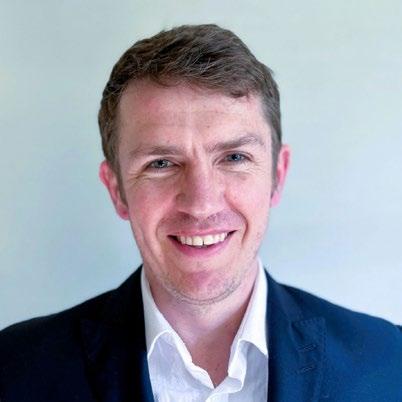
What are the most significant sources of pollution affecting rivers in your region?
Although the focus in the UK media has been targeted at utility companies, most of us who have been around for some time in the world of water quality monitoring know that there are multiple sources of pollution into rivers. Agricultural runoff is the most obvious but it’s good to see that road runoff is also being highlighted by some in the industry. Of course, wastewater effluent and CSO discharges are relevant to the discussion, but there probably needs to be a more site-specific approach to monitoring based on the likely sources, rather than blanket water quality monitoring, centred around wastewater effluent parameters.
What innovative technologies are being developed or implemented to monitor and improve river water quality?
At Badger Meter, following the 2020 and 2022 acquisitions of scan and ATi, we have over 25 years’ experience in water quality monitoring. In terms of new technologies, there are lots of new ideas coming to the market, but fundamentally they all rely on the same chemistry. When it comes to ammonium for example, the chemistry allows for three potential approaches:
1) Ion-selective electrodes (ISEs)
2) Colorimetric methods
3) Surrogate measurements
All three have pros and cons, but I would argue that ISEs are some of the best available technologies for remote monitoring in rivers.
What policy changes do you believe are necessary to better protect and manage river ecosystems in the coming decades?
If we want to be serious about demonstrating long term improvements in river water quality in the UK (where I am based), we need to look again at a) what we want to measure and why that is, and b) what are we expecting the outcomes to be. Personally, I would like the focus to be on long term improvements to river water quality, rather than monitoring tools designed to point the finger or give misleading information to the public. When designing policy, we really need to define outcomes, and work back from there to achieve this.
Chuck Louisell , Ph.D., P.E.
True Elements, Inc. Founder, Chief Science, Data, and Artificial Intelligence Officer

How are climate change impacts affecting river systems in your area, and what adaptation strategies are being considered?
One of the key impacts of climate change on riverine environments is changing river flow patterns driven by changing precipitation patterns. We are seeing shifts in the frequency of intense storms where it is not uncommon to have a month’s worth of rain fall in a matter of hours. These events often affect a wide region. The impacts start as flash floods that turn persistent as the upstream flows converge in collector streams, minor and major rivers. These events not only threaten lives and property, they often cause permanent shifts in stream and riverbank profiles that undermine terrestrial and marine habitats, damage infrastructure, and morph the riverine environment into dangerous and unpredictable flow channels – a vicious cycle begins.
What role do community-based initiatives play in river conservation efforts, and how can they be strengthened?
Community-based initiatives are not only important; they are the key to river conservation. The precipitation profiles we are seeing now and anticipating in the future demand a combination of infrastructure improvements and naturebased solutions. But the problem with both is that it is rare that a single location large enough to make a difference is available. The key to addressing the problem at scale is a distributed, multi-solution approach which requires a continuing collective effort that can only be generated by committed communities.
What policy changes do you believe are necessary to better protect and manage river ecosystems in the coming decades?
The key word in this question is ‘decades’. Effective solutions require careful long-term planning. In successful collective efforts, this planning must include coordinated implementation to avoid unintended consequences, maximized long-term synergies, and adaptation to lessons learned throughout the process of addressing climate change.
Riverrecycle Oy CEO and Founder

What are the most significant sources of pollution affecting rivers in your region?
In regions like the Philippines, Indonesia, India, Bangladesh, and Ghana, river pollution is a critical issue driven by urban waste, industrial discharges, and agricultural runoff.
Urban areas are major contributors to river pollution, mainly through the improper disposal of plastic and other waste. Big cities like Manila, Mumbai, and Accra struggle with inadequate waste management systems that fail to cope with the sheer volume of waste generated, leading to substantial amounts of plastic and other debris ending up in rivers. The problem is exacerbated in informal settlements, where waste disposal systems are either overwhelmed or absent, leading to direct dumping of waste into the environment.
While informal waste recycling can reduce waste to some extent, it also contributes to river pollution. In many cases, non-recyclable materials, particularly plastics, are discarded into rivers, exacerbating pollution levels. This is a common problem in countries where informal recycling sectors play a significant role in waste management.
What policy changes do you believe are necessary to better protect and manage river ecosystems in the coming decades?
Extended Producer Responsibility (EPR) programs can ensure that manufacturers are accountable for the full lifecycle of their products, including their disposal and recycling. A good example of this working is in the Philippines.
Improving waste management systems is critical to prevent plastic waste from reaching rivers. This includes investing in modern recycling infrastructure and launching public awareness campaigns to educate people on proper disposal methods.
What are the main challenges in balancing economic development with river ecosystem conservation?
In emerging economies, rivers are often used as landfills. This is due to waste management systems not functioning in informal settlements and the inhabitants resorting to the last available way to dispose of their waste.
Arranging new homes for these people is a significant cost when developing the areas. In coastal communities, it is also very difficult to find new land to build the replacement housing close to the sea where the community used to live.
Nicole Nally Global Aquarius Sales and APAC Regional Manager

How has the presence of microplastics in rivers changed over the past decade, and what are the potential long-term consequences?
Over the past decade, microplastics in rivers have increased significantly. Studies have shown that the concentration of microplastics in freshwater systems has been rising due to various factors, including urban runoff, industrial discharge, and the breakdown of larger plastic debris. This trend reflects a broader concern about plastic pollution in the environment.
What innovative technologies are being developed or implemented to monitor and improve river water quality?
Remote sensing has allowed satellites equipped with sensors to monitor water quality over large areas, detecting changes in turbidity, temperature, and even the presence of certain pollutants. NASA’s MODIS (Moderate Resolution Imaging Spectroradiometer) and Sentinel satellites from the European Space Agency are examples. Further to this, machine learning algorithms can analyse large datasets from sensors and satellites to predict pollution events, track trends, and identify potential sources of contamination. These tools can be very helpful in making proactive management decisions.
Are there any emerging contaminants of concern in rivers that aren’t yet widely recognised or regulated?
Emerging contaminants in rivers, such as new pharmaceuticals, microplastics, PFAS, endocrine disruptors, and synthetic materials, pose growing concerns due to their unregulated presence and potential environmental and health impacts.
What policy changes do you believe are necessary to better protect and manage river ecosystems in the coming decades?
To better protect river ecosystems in the coming decades, we predict regulators will be heavily focussed on monitoring emerging contaminants, upgrading wastewater treatment, preventing pollution, adopting integrated water management, enhancing monitoring, promoting green infrastructure, engaging the public more, and planning for climate resilience.
Isle Utilities Principal Innovation Consultant

What are the most significant sources of pollution affecting rivers in your region?
I live in a heavily urbanised catchment in London, UK and while sewage pollution is currently being spotlighted by customers, the media and regulators we must also tackle highway runoff as it can be a significant source of harmful heavy metal and polyaromatic hydrocarbon pollution in local watercourses.
What innovative technologies are being developed or implemented to monitor and improve river water quality?
At Isle Utilities we work closely with the global water sector and are seeing a desire for high quality and accurate data that is both driving and enabling innovation. Low-cost sensors are being developed to monitor not only the quantity but also the quality of storm water discharges, digital twins are combining multiple datasets to create models of complex river systems where solutions to improve river health and water quality can be simulated, and open-source platforms are becoming more prevalent to increase trust in data and support catchment-based decision-making.
What are the main challenges in balancing economic development with river ecosystem conservation?
There is another way to approach economic development and conservation and that is through the payment of ecosystem services. In essence, an ecosystem asset (woodland creation, leaky dams) provides an ecosystem service (natural flood management) which provides an ecosystem benefit (reduced flood risk), and the beneficiaries (flood risk authorities) fund the managers of the ecosystem asset (local landowners e.g farmers/ forestry).
What role do community-based initiatives play in river conservation efforts, and how can they be strengthened?
Citizen science is growing in popularity and has such varied application that it provides opportunities for a range of community members. Environmental DNA (eDNA) monitoring requires minimal training and can be used for biodiversity surveying, building leaky dams is a popular activity for school children and reporting invasive species, such as Himalayan balsam, is open to everyone who enjoys the countryside. These initiatives could be strengthened if there was a standardised approach for citizen science data collection and if more formalised green skills training and accreditation were available.
KETOS Inc. Founder/CEO
What innovative technologies are being developed or implemented to monitor and improve river water quality?

Satellite-based monitoring is a common emerging technology for rivers and waterbodies since it’s a low-key effort for companies to innovate with. However, it’s not as accurate compared to many sophisticated onsite sensing techniques needed for complex parameters. In an ever-changing environment (like rivers) the frequency of learning and adjusting is required alongside a combination of water and climate risk models to showcase and reflect the impacts on rivers.
How effective are current agricultural practices in preventing runoff into rivers, and what improvements could be made?
There are a substantial number of improvements that can be made to prevent toxic runoff into rivers, especially on agricultural lands only incentivized to optimize yield. With climate impacts currently affecting agricultural operations, farmers are implementing a wide variety of technologies that can look into soil health. However, there aren’t enough subsidies to allow for safer runoff and farmers cannot be expected to operate out of an altruistic sense of environmental well-being. A middle road can be realized in the adoption of innovative solutions (that already exist) that can tangentially help optimize fertilizers and crop yield while measuring groundwater quality. These technologies indirectly help make the runoff safer since the chemicals used can be reduced through higher visibility and control over the concentrations and compositions in the water applications. This can be a win-win-win for all parties involved.
What policy changes do you believe are necessary to better protect and manage river ecosystems in the coming decades?
A strong sense of urgency is needed for change to truly be executed. After all, while informative, conferences, white papers, and panel conversations aren’t going to cut it.
The bureaucratic approaches to policy, archaic processes, and lack of foresighted opinions resting with key decision-makers can make change daunting - and innovative solutions already in the market run the risk of never surviving while waiting on the market to pursue a successful impact. Most regions desperately need to see a change in their river ecosystems TODAY, if not YESTERDAY, and they need policies that meet the moment, embrace technology, and prioritize data sharing to help increase visibility, reveal challenges, and adapt to changing realities faster so that river ecosystems can be dynamically protected.
4ocean Co-Founder & CEO

What are the most significant sources of pollution affecting rivers in your region?
As 4ocean operates in multiple cleanup sites around the world, the answer can vary. However, one of our major river operations is along the Rio Motagua, the largest river in Guatemala and one of the most polluted in Central America, where our team acts as one of the first lines of defense for keeping trash and plastic pollution from the world’s oceans. The most commonly recovered items are bottles (made from plastic, PET, HDPE, and glass), sandals and shoes, styrofoam, aluminum cans, and of course, plastic bags.
What innovative technologies are being developed or implemented to monitor and improve river water quality?
Every year, over 40 million pounds of trash flows from the Rio Motagua and its tributaries into our oceans. A truly innovative solution was needed, so we partnered with Corona International to launch A River of Change. Working with local communities, we employed captains and crew to develop a sustainable cleanup operation that includes a containment boom system designed to intercept and collect debris as it flows downstream without restricting wildlife. This project uses the recovered materials to create new products to fund future cleanups, and protect our valuable waterways.
What role do community-based initiatives play in river conservation efforts, and how can they be strengthened?
Many people feel that they can’t make a difference in the global plastic crisis, either because they are too far from major waterways or that it seems too big to fix. The truth is, even one dedicated individual can make a significant difference. At 4ocean, we often share information about how individuals and organizations can cut down on their average plastic consumption with reusable and sustainable products, or by working with us directly as an official partner. For those who want to take a big step, we recommend joining our Bracelet of the Month Club, which doubles their impact and includes some awesome limited edition products as a token of appreciation for their support in helping us put an end to the ocean plastic crisis.
Palintest Head of Product Management

What are the most significant sources of pollution affecting rivers in your region?
The primary sources of pollution in UK rivers include agricultural runoff, industrial discharge, untreated sewage, and urban stormwater. In 2023, more than 464,000 incidents of raw sewage were discharged into English rivers. Additionally, no river in England met chemical quality standards, painting a concerning picture of overall water quality.
What innovative technologies are being developed or implemented to monitor and improve river water quality?
Improving river water quality begins with consistent monitoring. The phrase “You can’t manage what you can’t measure” fits well in the context of rivers. With accurate data, it’s possible to assess current conditions, pinpoint pollution sources, and track progress over time.
Advances in portable water testing enable field officers to quickly trace contamination. Tools like Kemio’s sensor technology deliver fast, reliable measurements, with geotagged data uploaded to the cloud, supporting informed decisions.
Environmental officers handle incidents like sewage spills, slurry runoff, and mis-connections, tracing pollution downstream until they find unaffected areas or the “plug” of contamination.
What are the main challenges in balancing economic development with river ecosystem conservation?
One major issue is the conflict between industrial growth and environmental protection. Ensuring compliance with environmental regulations can be costly for businesses, leading to resistance or minimal investment in sustainable practices. Development projects may boost local economies, but they can disrupt ecosystems through pollution or loss of biodiversity, making restoration costly and difficult.
What policy changes do you believe are necessary to better protect and manage river ecosystems in the coming decades?
The policies must be seen as pursuing both goals under a unifying purpose of sustainable growth, where economic progress and environmental protection serve each other. Sustainable practices can create a future where economic development and environmental conservation reinforce each other, leading to healthier ecosystems and resilient economies. For instance, permeable pavements and green roofs reduce runoff and pollution, helping balance urban expansion with water quality conservation.
Marc Yaggi
Waterkeeper Alliance Chief Executive Officer
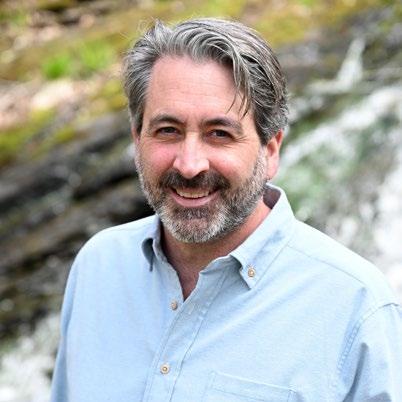
What innovative technologies are being developed or implemented to monitor and improve river water quality?
Efforts to improve water quality have been hindered by a lack of comprehensive, accurate, and accessible data. However, innovative technologies are transforming monitoring practices. Rapid field testing kits now allow citizen scientists to measure myriad pollution parameters using sensors connected to smartphones for real-time data collection. Autonomous sensors are increasingly deployed in rivers and streams for rapid pollution detection. Advances in eDNA and eRNA enable scientists to analyze genetic material from water and sediments to assess biodiversity, detect invasive species, and monitor ecosystem health. Additionally, artificial intelligence and advanced optical techniques offer the potential for rapid chemical detection and data analysis, enhancing water quality monitoring and protection efforts.
What role do community-based initiatives play in river conservation efforts, and how can they be strengthened?
We believe that local action drives change. Communitybased initiatives harness local knowledge and ownership, supporting local efforts to monitor water quality, conduct cleanups, restore habitats, and advocate for policy changes. Miami Waterkeeper exemplifies this approach with its successful “1000 Eyes on the Water” program, which gives local volunteers the skills to observe, document, and report pollution incidents that they may come across during their daily activities. Strengthening community-based initiatives with better funding, technical support, and training can further amplify their impact.
Are there any emerging contaminants of concern in rivers that aren’t yet widely recognised or regulated?
Waterkeeper Alliance, along with Pacific Northwest Waterkeeper groups, has been focusing on a lesser-known but highly toxic contaminant called 6PPD, an organic chemical used in vehicle tires. As tires wear down, tiny particles wash from roadways into waterways through stormwater. When 6PPD encounters ozone, it transforms into 6PPD-quinone, which research has shown to be deadly to fish like brook trout, rainbow trout, and coho salmon. It’s currently being addressed mostly at the state level—California-based fishing organizations are pursuing litigation against tire manufacturers for Endangered Species Act violations and the Puyallup Tribe and other Indigenous groups in Washington’s 10th District are urging a federal ban. Although EPA is researching 6PPD’s risks, we are advocating for immediate Congressional action.
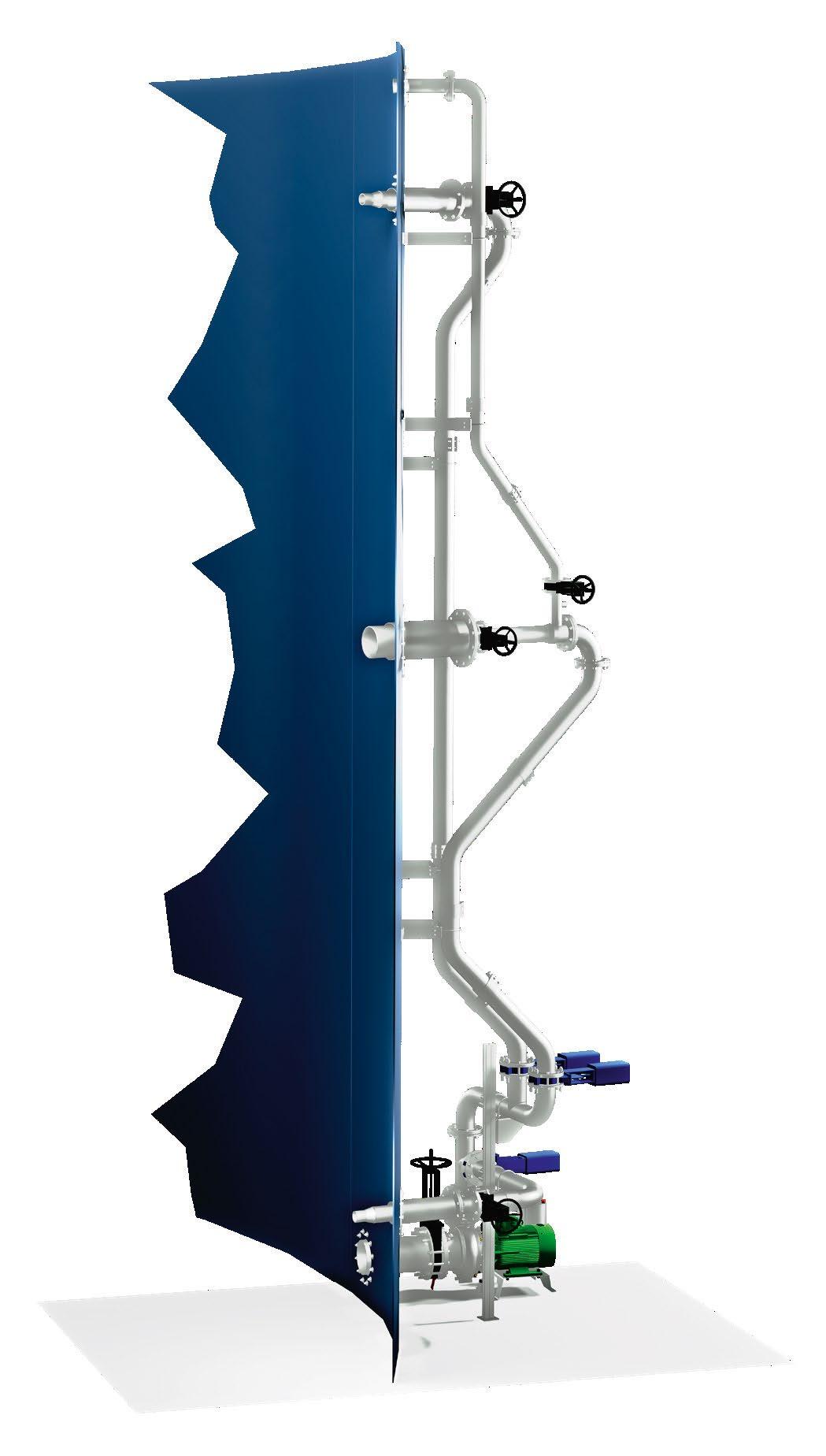
the power of efficient mixing – watch our video now

Date: 24 - 26 September
Location: Riyadh International Convention and Exhibition Center
Website: globalwaterexhibition.com
Global Water Expo is the only dedicated exhibition focused on the planning and construction of water infrastructure in Saudi Arabia. Given the success of the inaugural edition and the buoyancy of the market, it will double in size for 2024. Saudi Arabia’s government is investing $80bn in the sector to meet its ever-increasing water requirements.
The Kingdom’s commitment to addressing water supply challenges is evident through the establishment of the National Water Strategy 2030.connections, and gain inspiration for addressing today’s global water challenges.
Date: 25 September
Location: Leeds, UK
Website: britishwater.co.uk/events
The Water Industry Forum (WIF) Annual Dinner is taking place in Leeds on 25 September 2024, with special guest speaker Sharon Darcy, Chair of the Linear Infrastructure Planning Panel (LIPP).
The dinner is a great opportunity to meet with colleagues from across the UK water sector and to hear from the keynote speaker.
Date: 3 October
Location: London, UK
Website: conferences.aquaenviro.co.uk
The 2024 UKWIR Annual Conference will be held on the 3rd October at The Hilton London Tower Bridge.
The event will focus on connecting cross-sector expertise to inspire action and address the most pressing water challenges of the 21st century. It will bring together key voices from the water industry and beyond, including sectors such as agriculture, energy, media and communications, government regulation and academia.
Date: 5 - 9 October
Location: New Orleans, Louisiana, USA
Website: weftec.org
Join a community of innovators, experts, and leaders at WEFTEC!
WEFTEC, the Water Environment Federation’s Technical Exhibition and Conference, is the largest annual water quality exhibition in North America and offers water quality professionals the best water quality education and training available.
Date: 16 - 18 October
Location: Mumbai, India
Website: ifat-india.com
India is developing into one of the future markets for environmental technologies. IFAT India is already the leading trade fair for water, sewage, waste and recycling in India. With the launch of IFAT Delhi in 2020, another strong platform has been created for the environmental industry in the north of the country.
